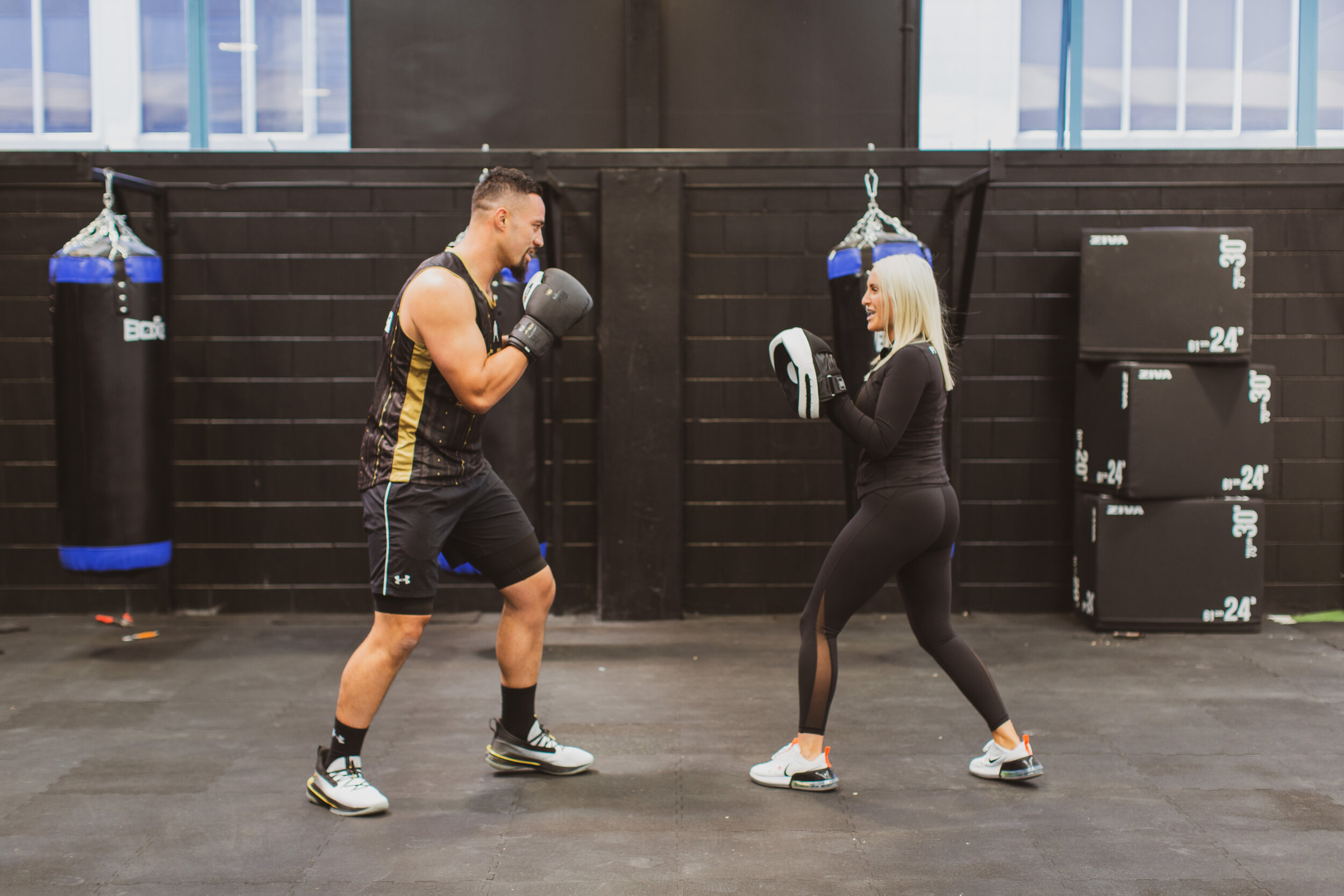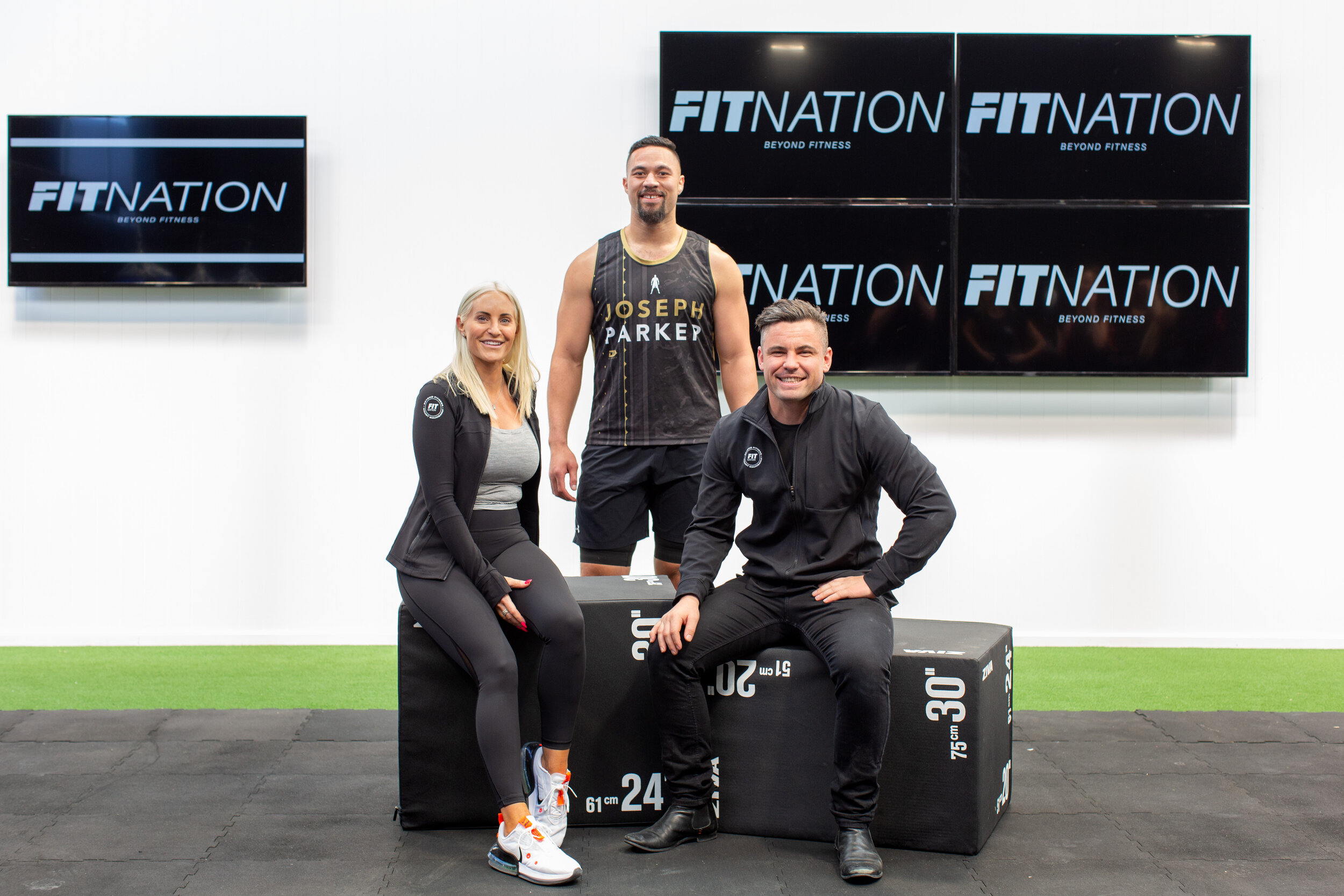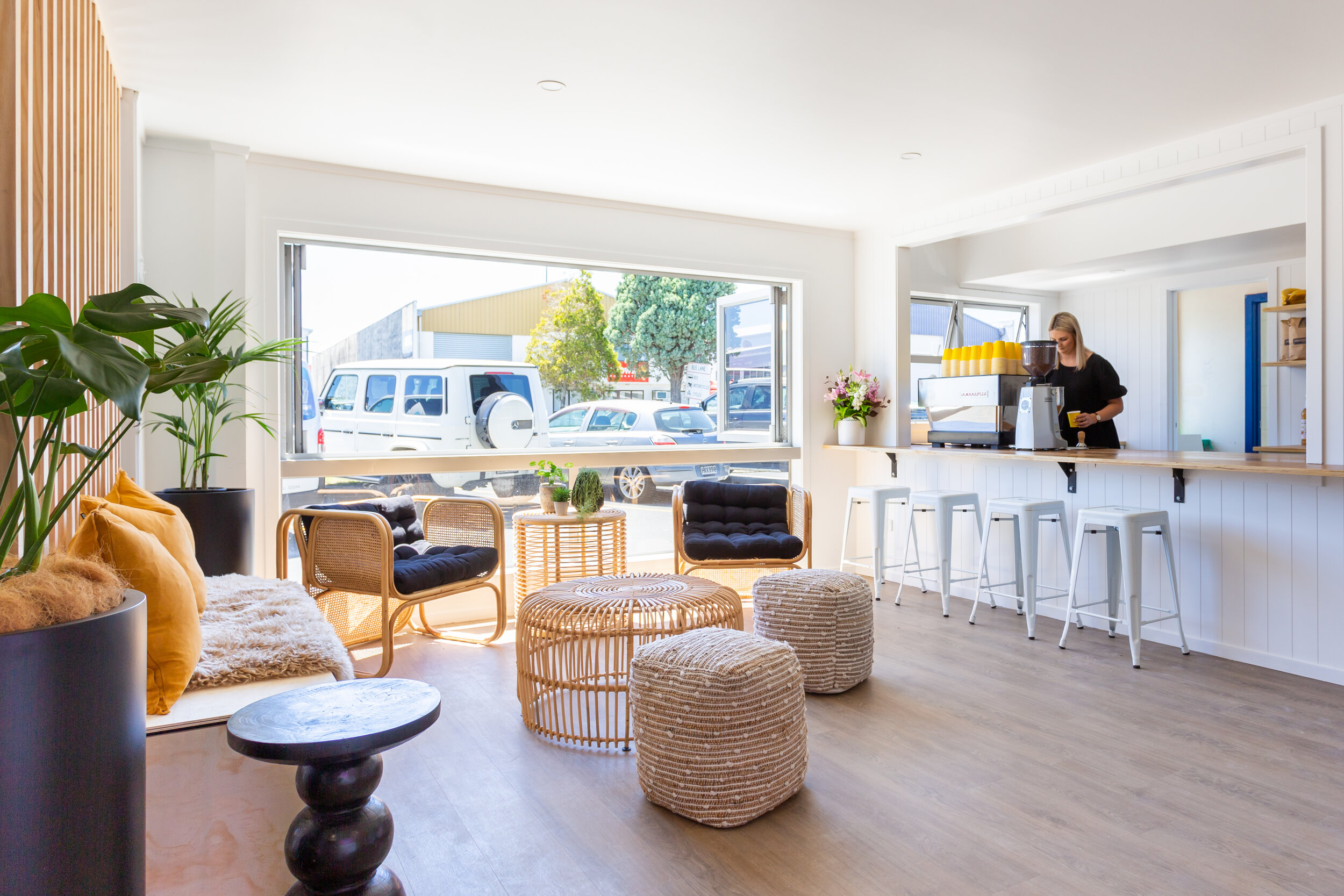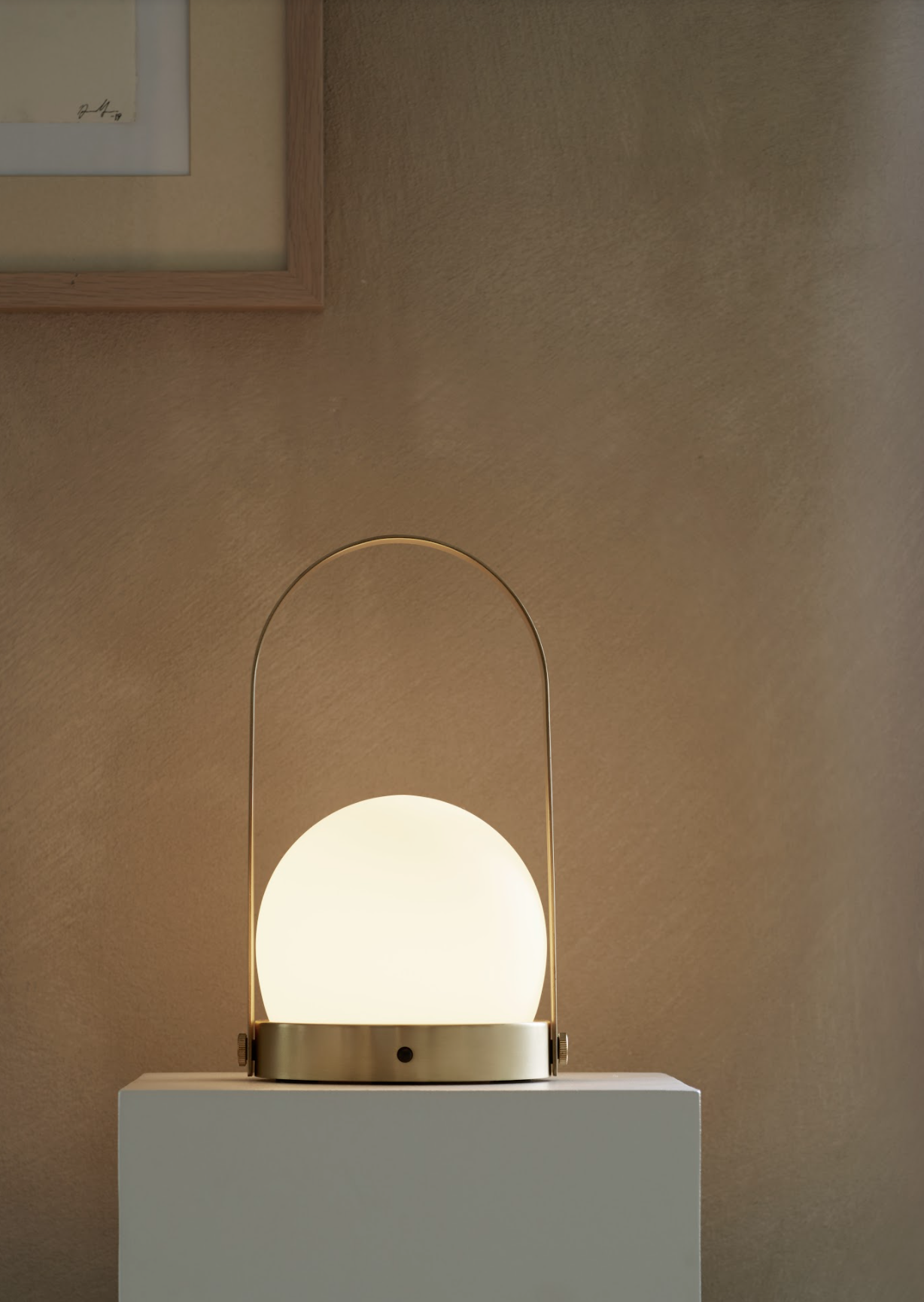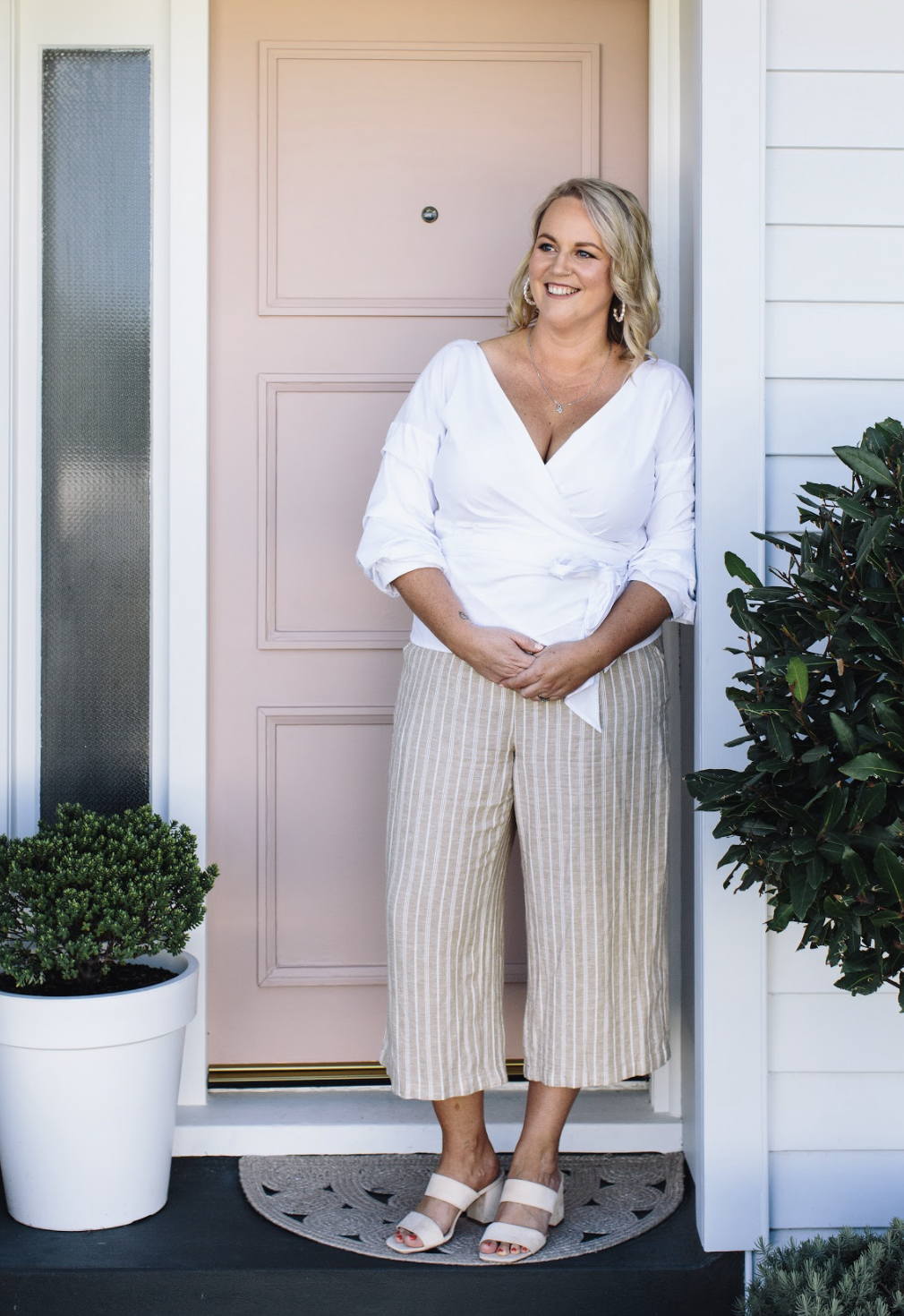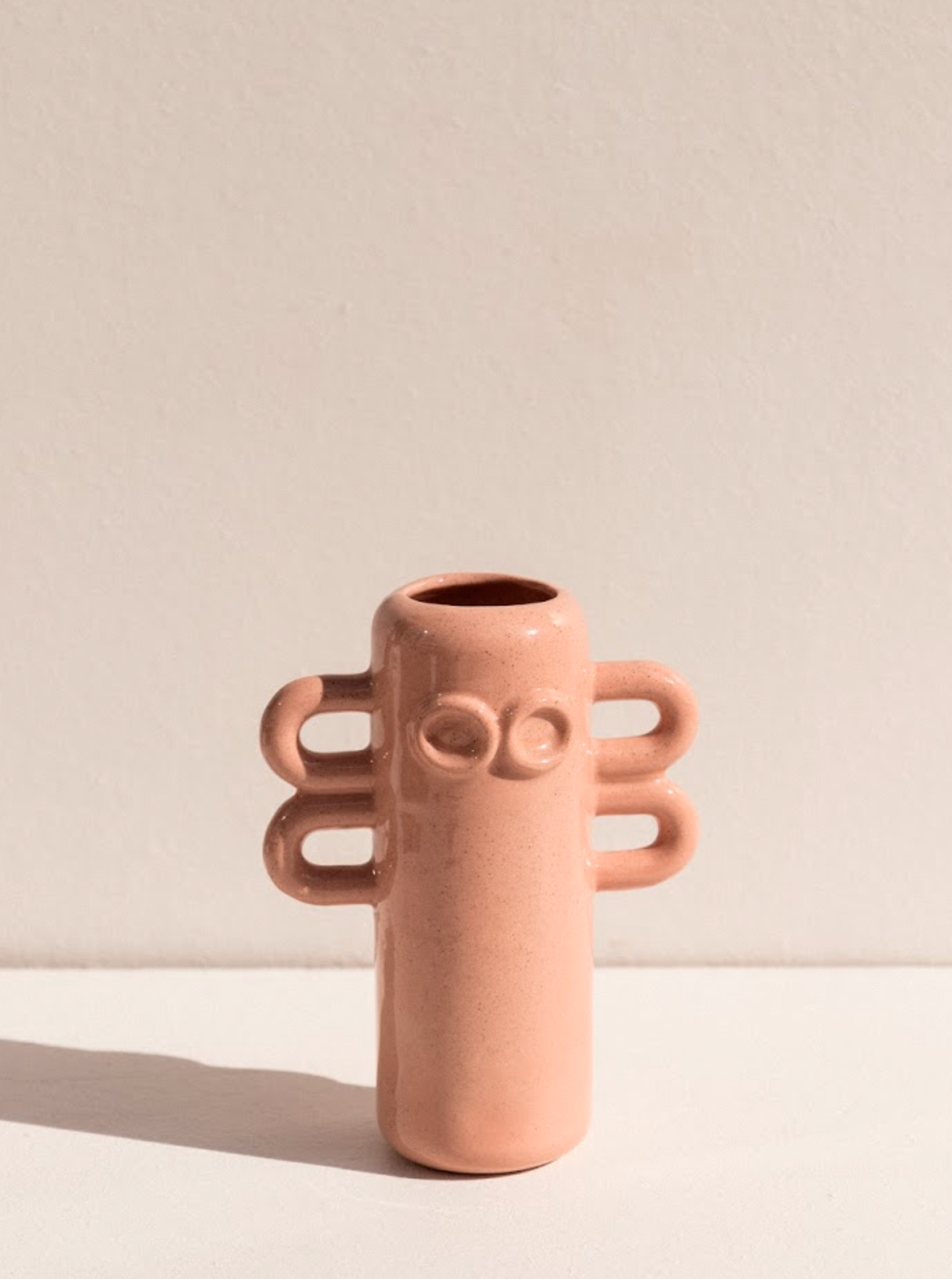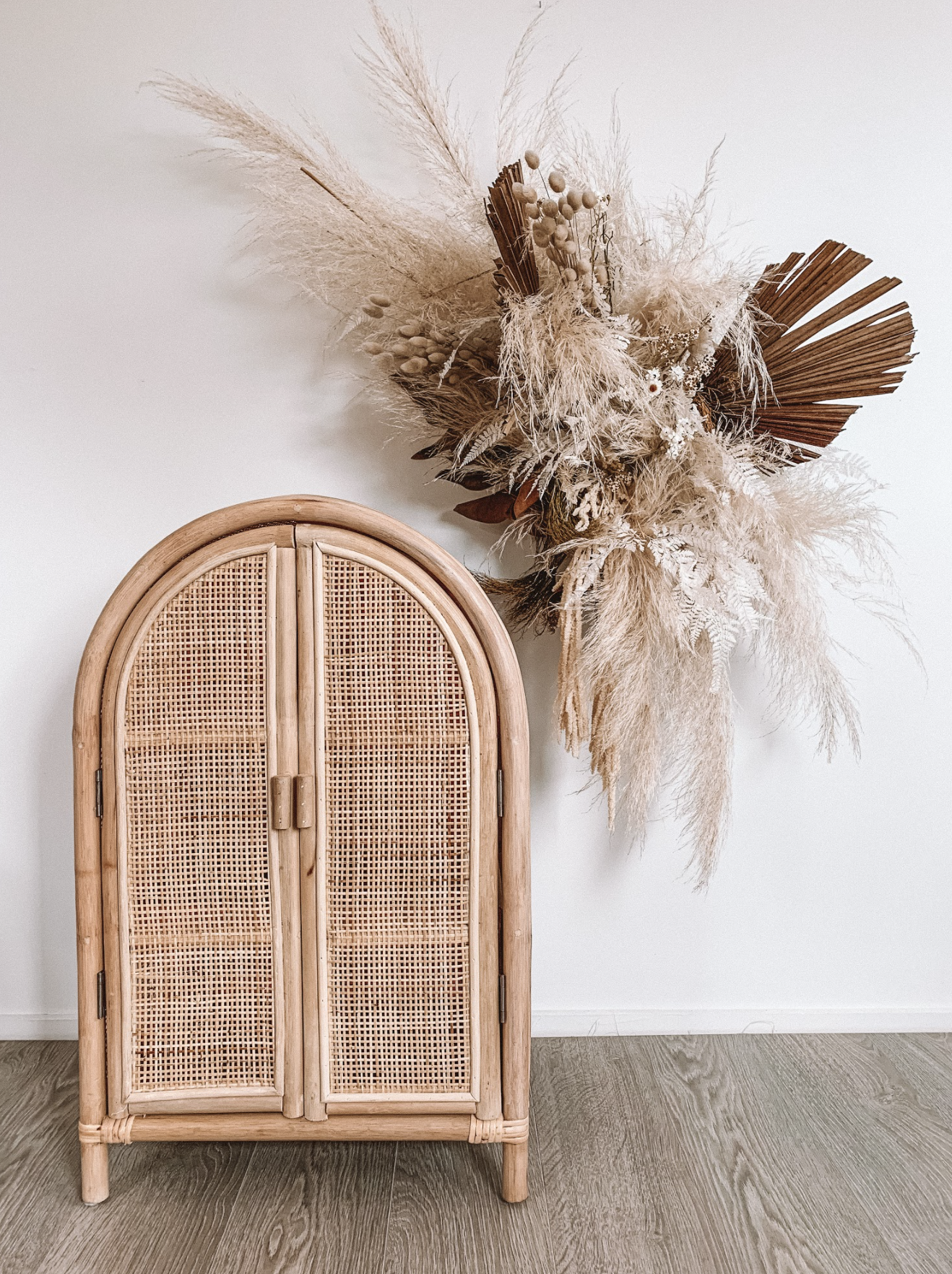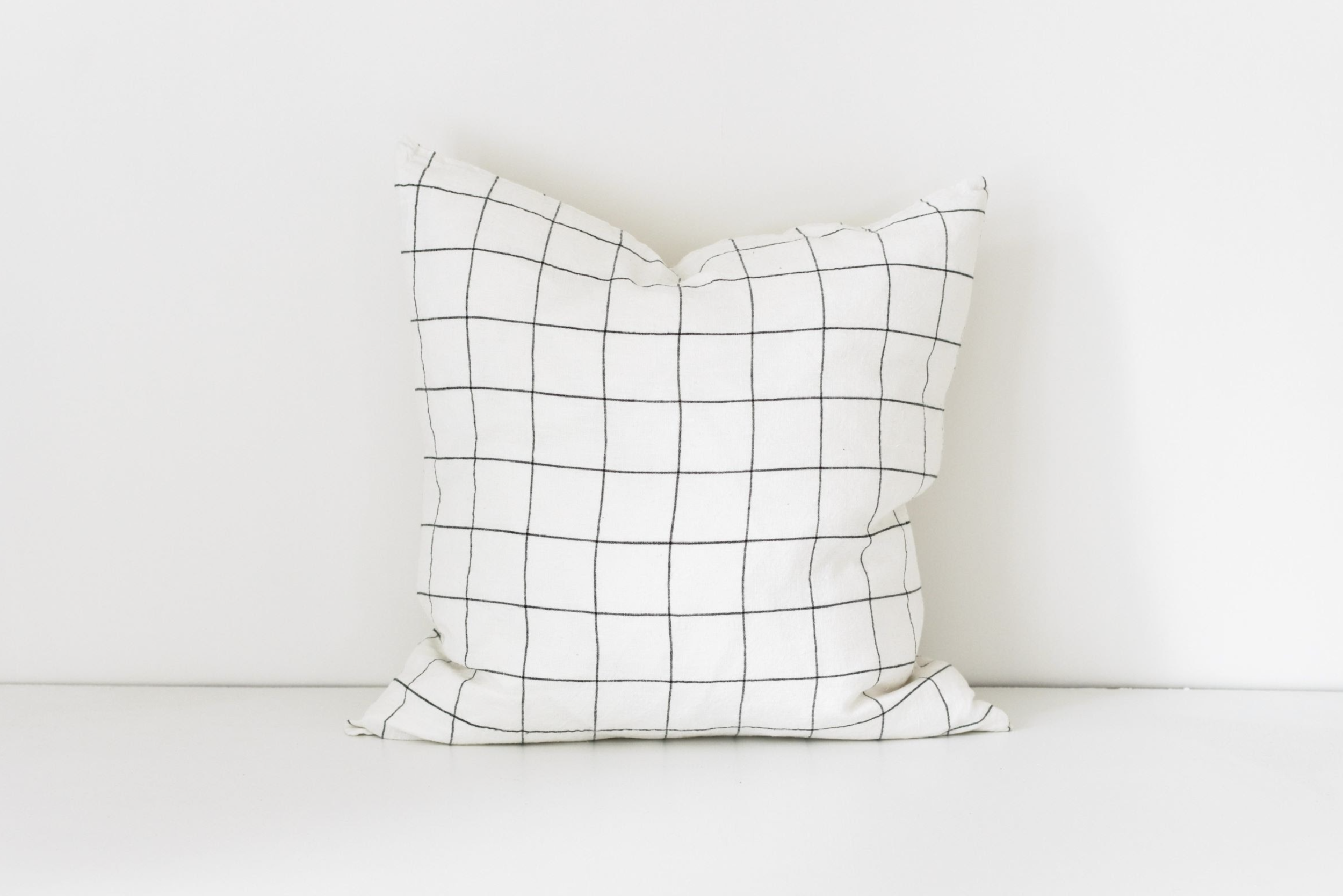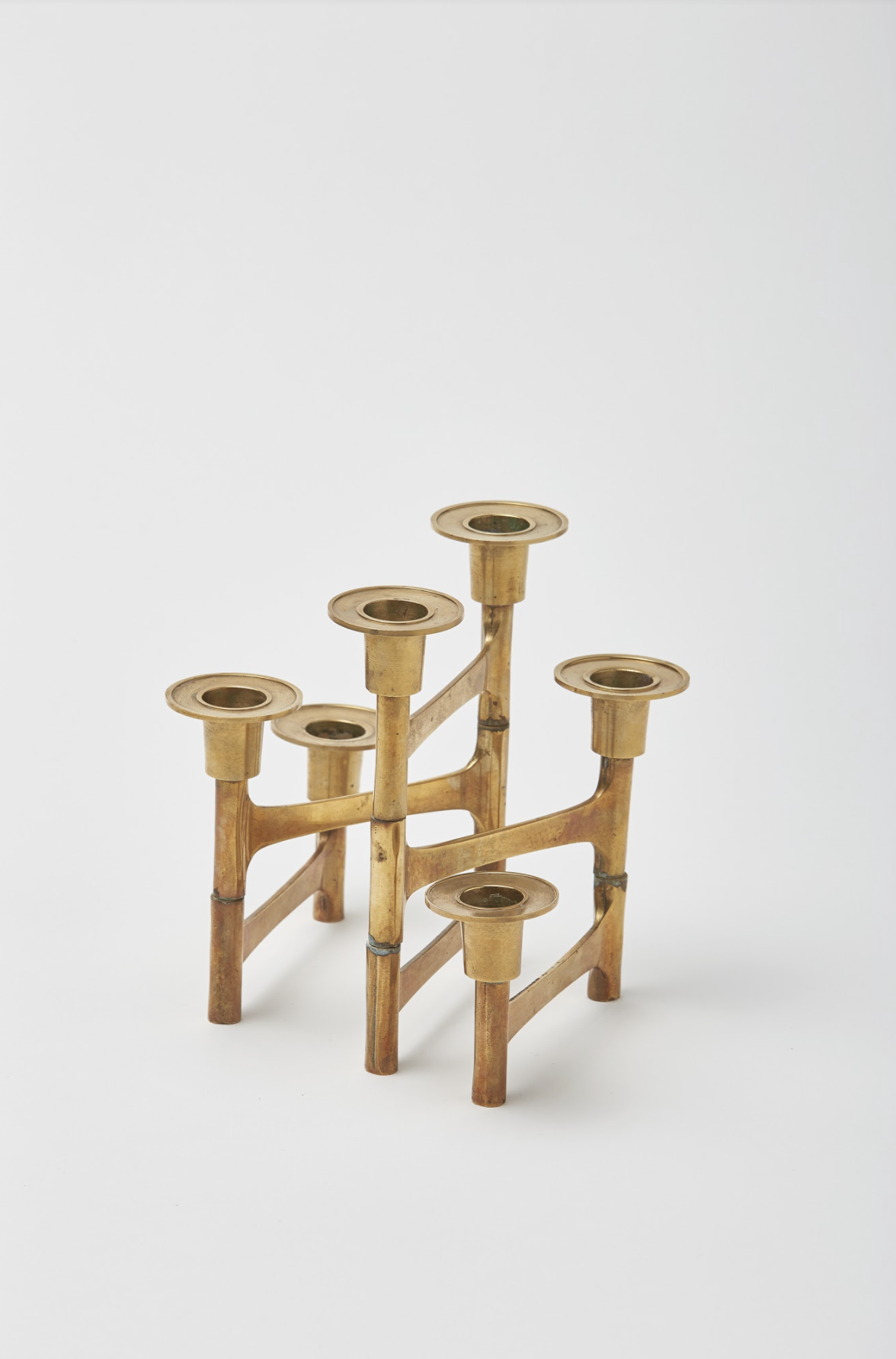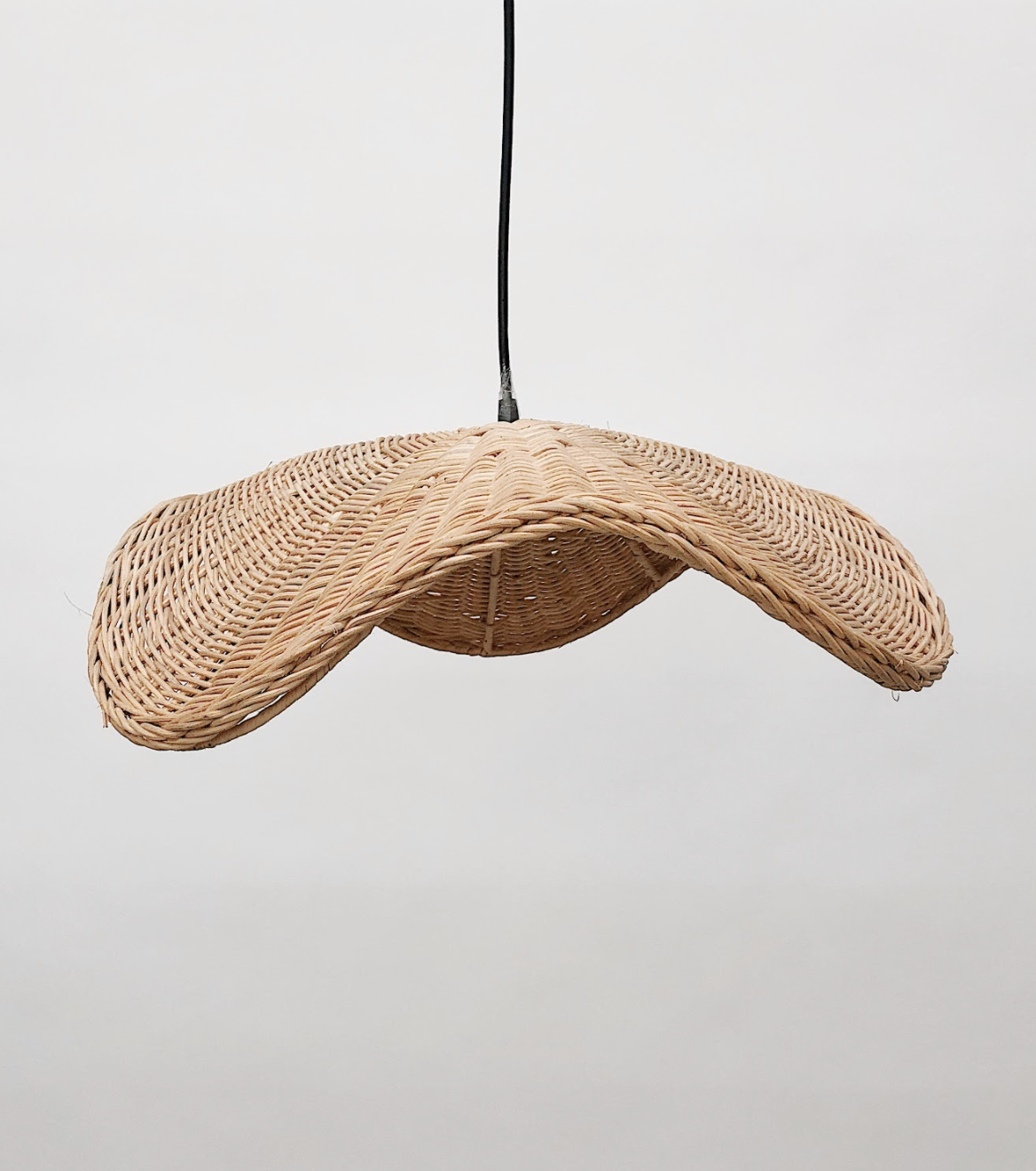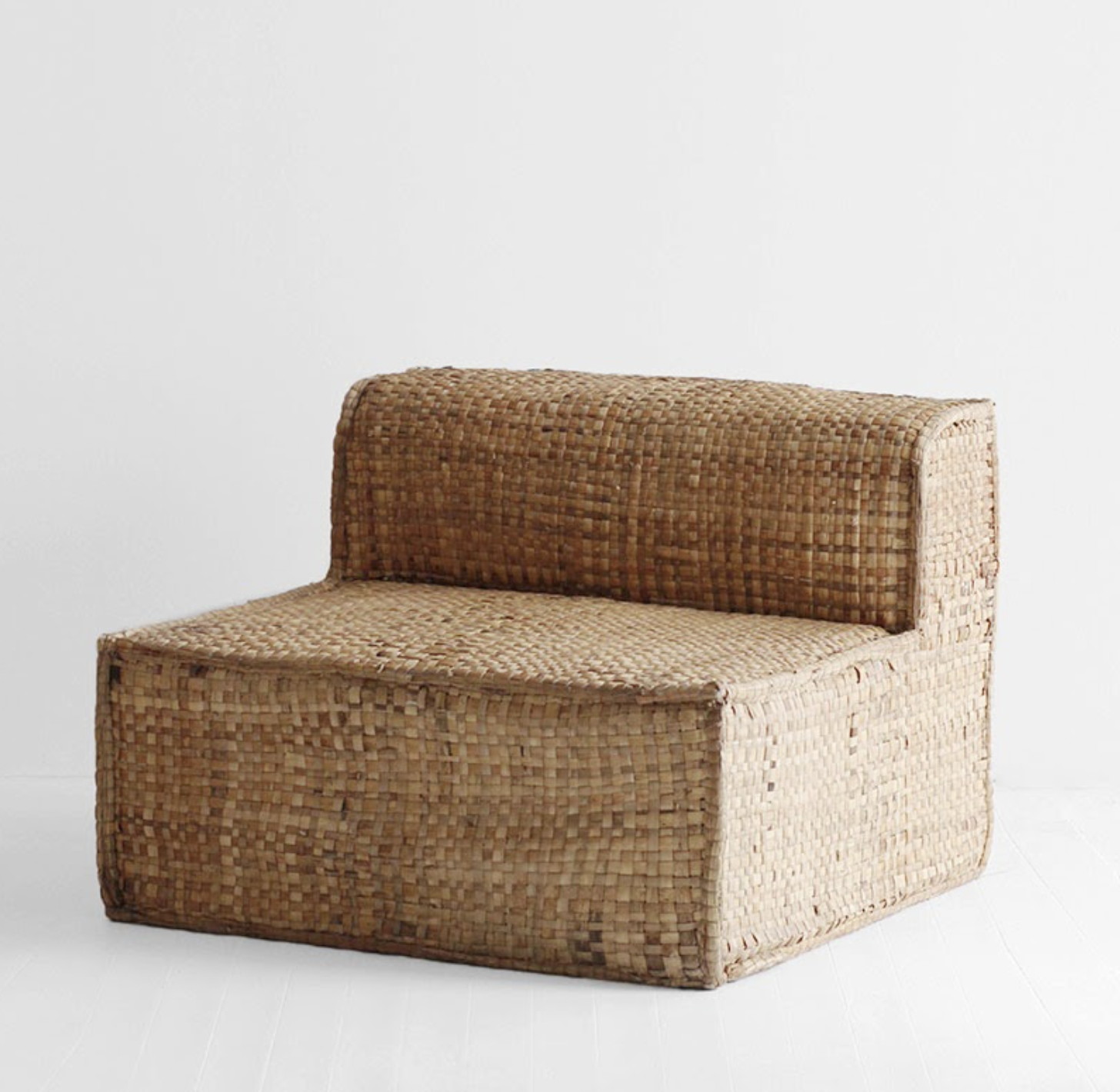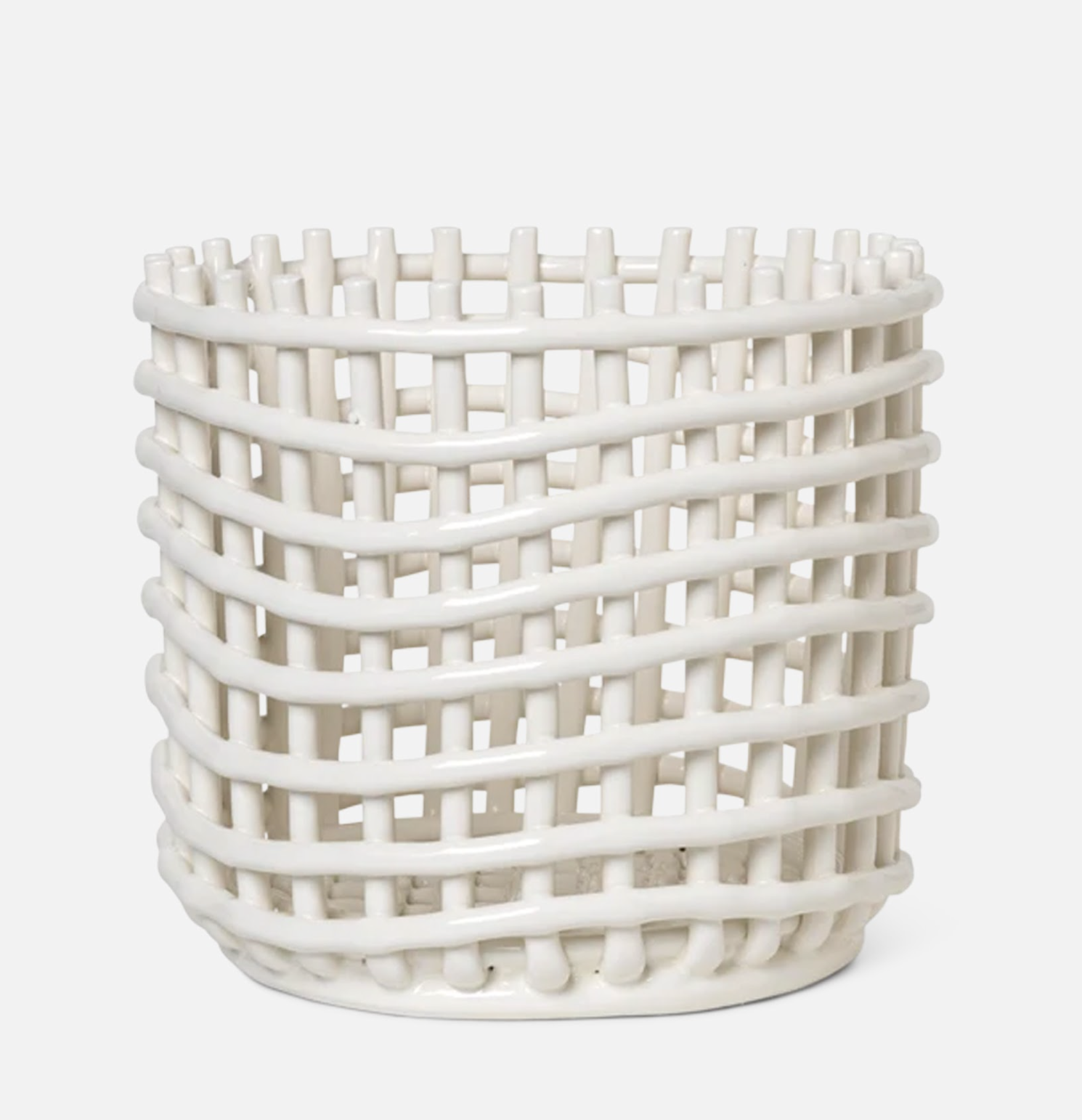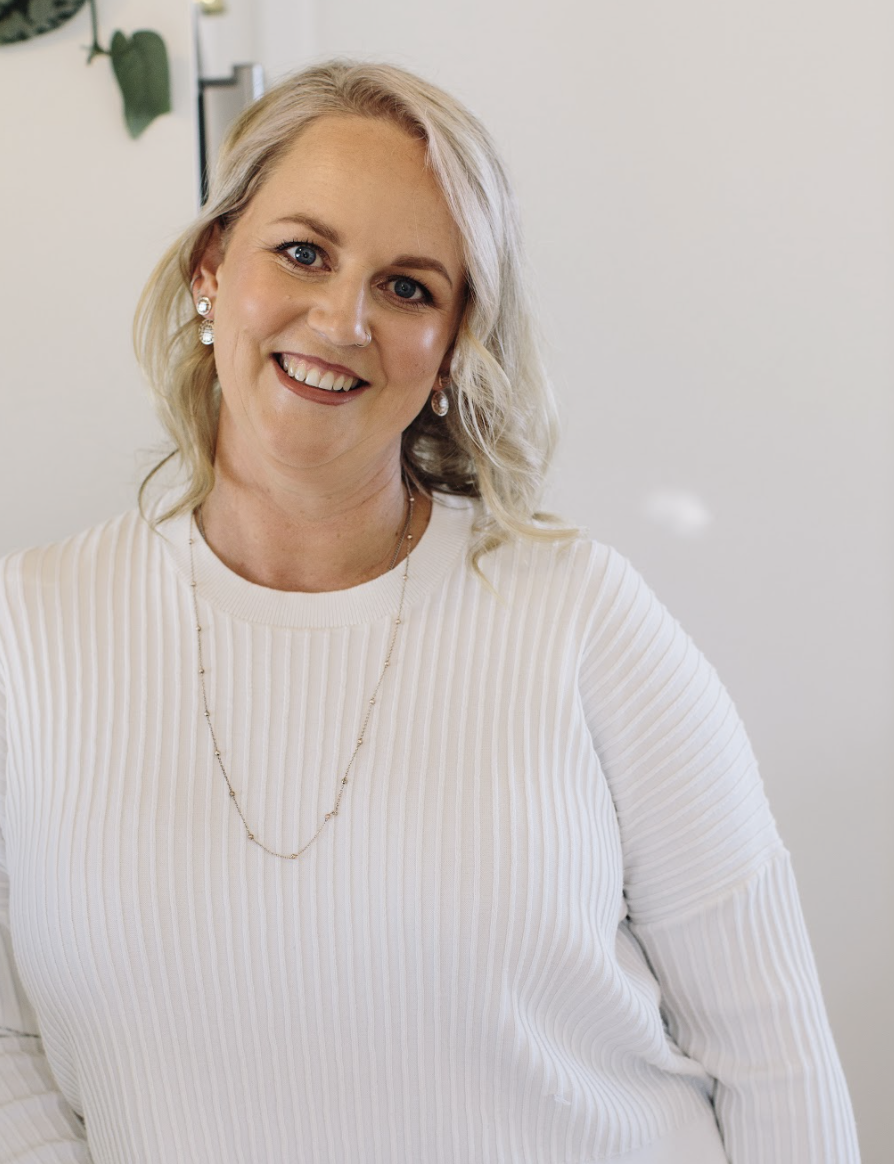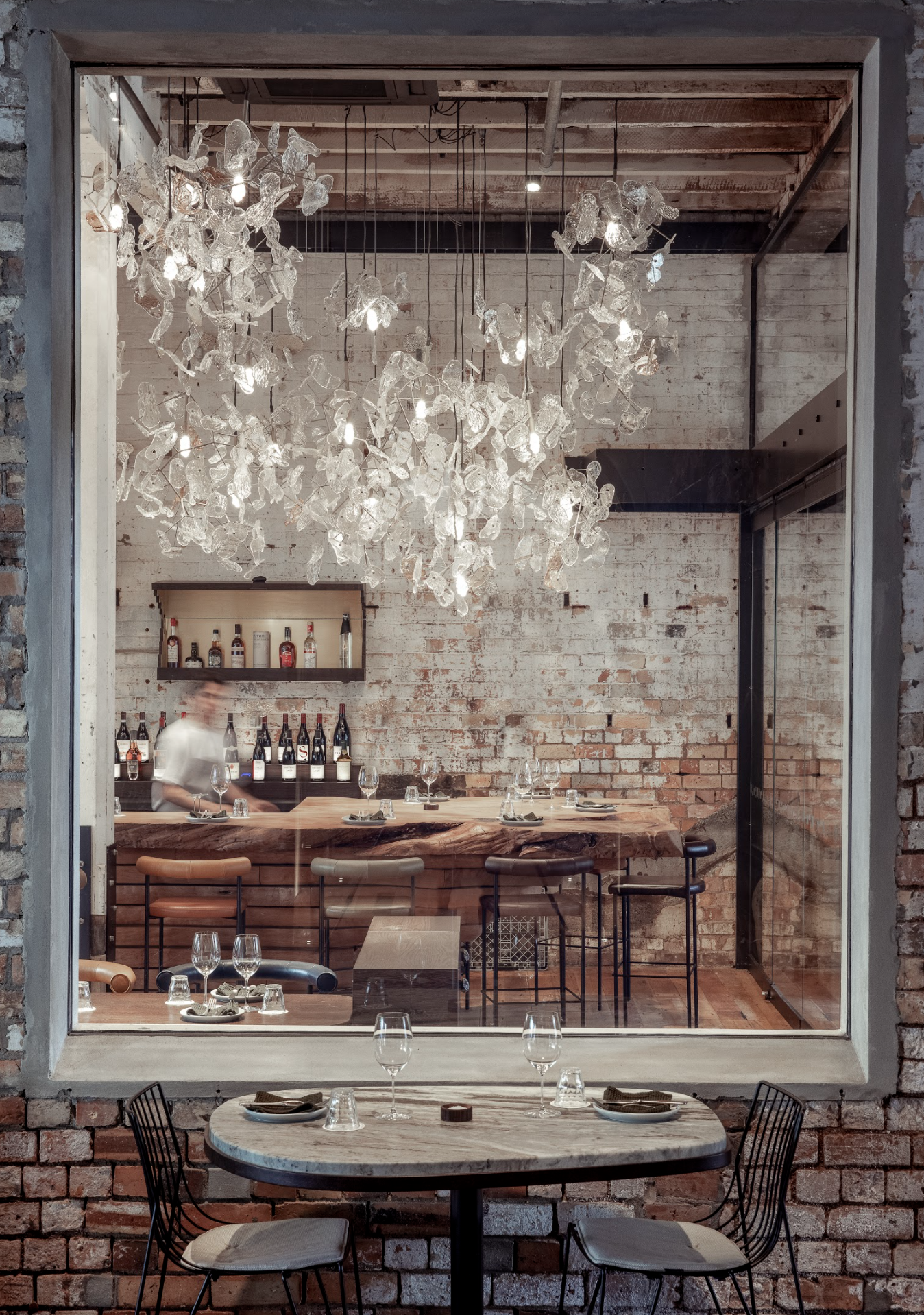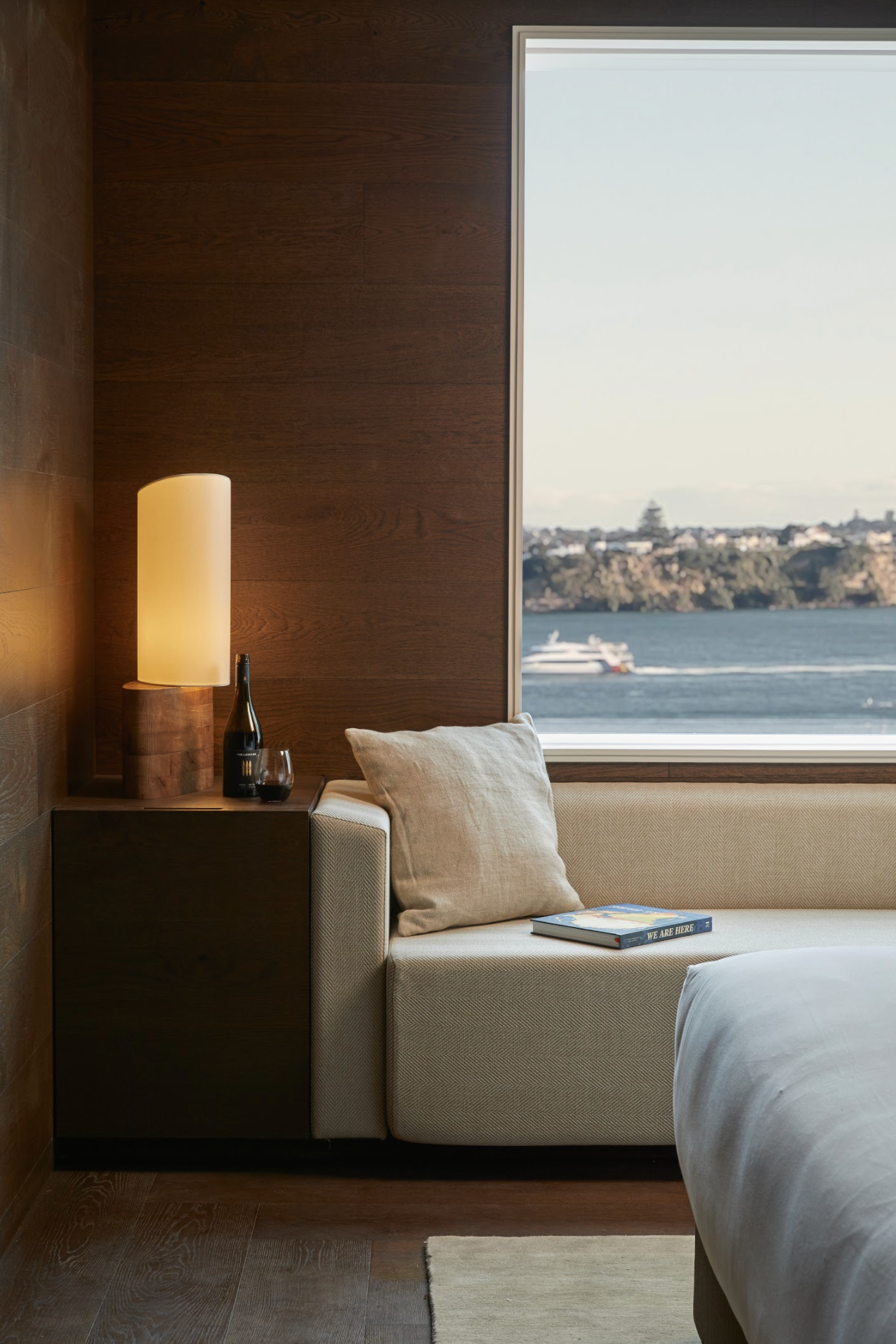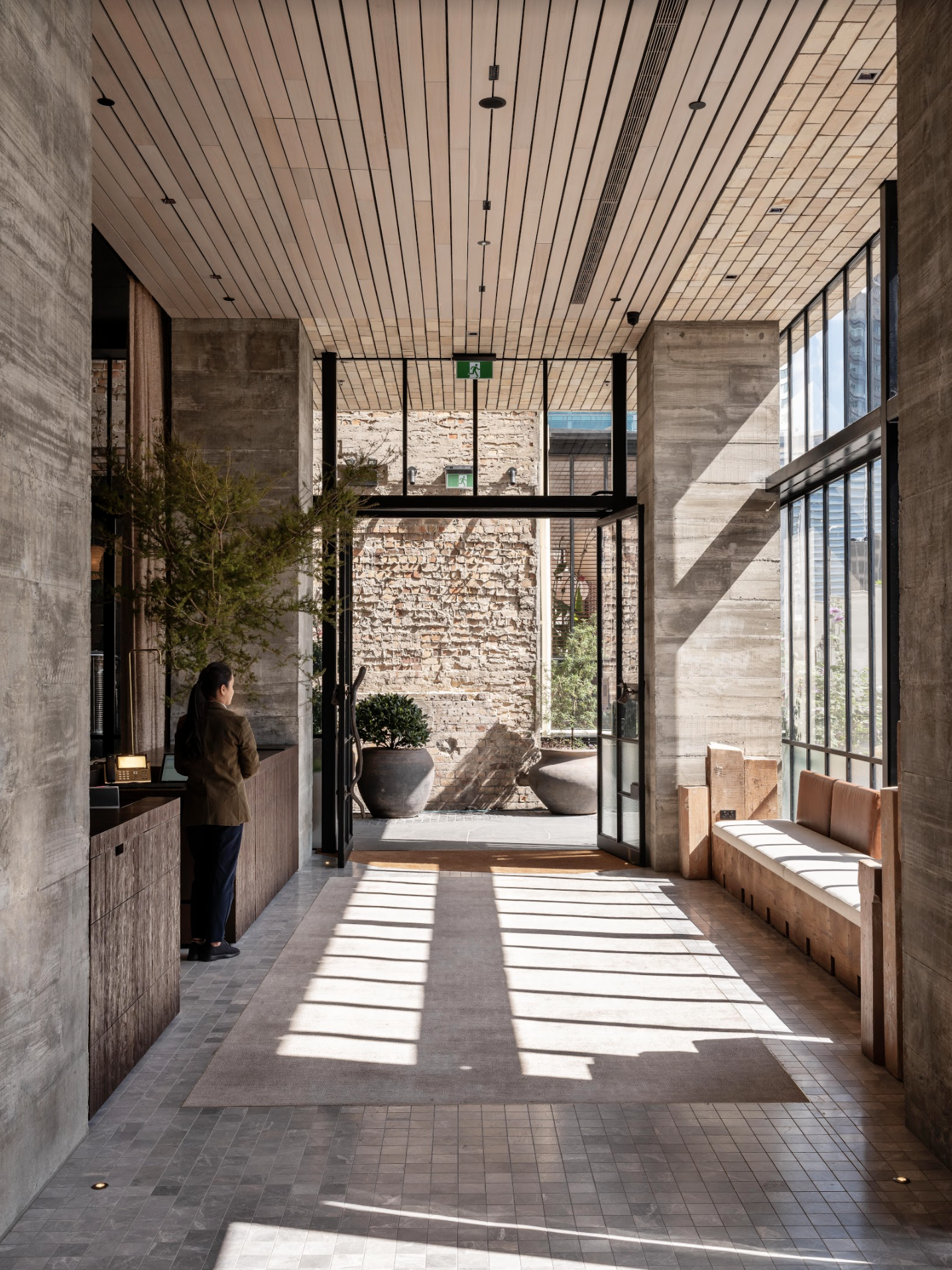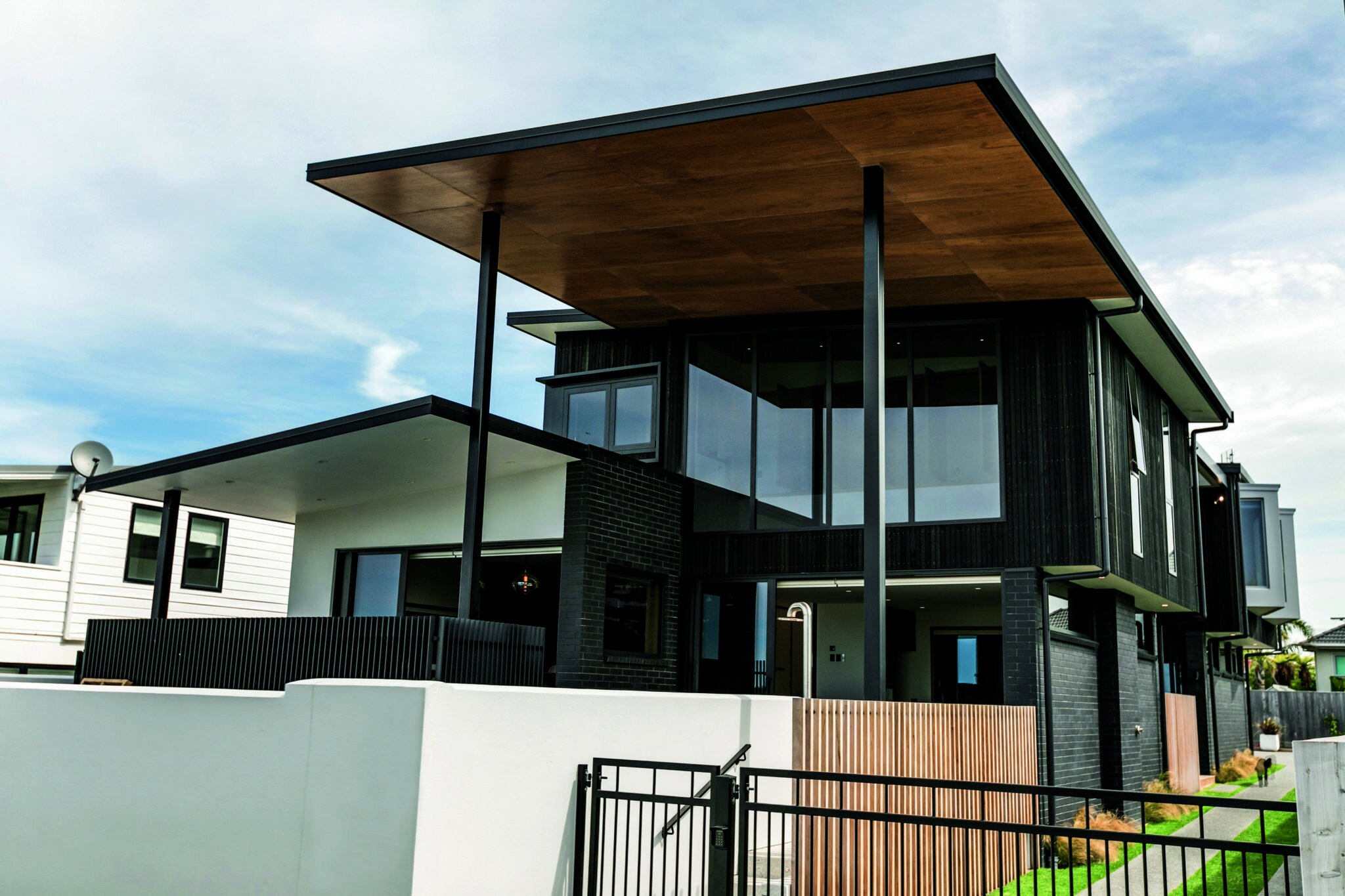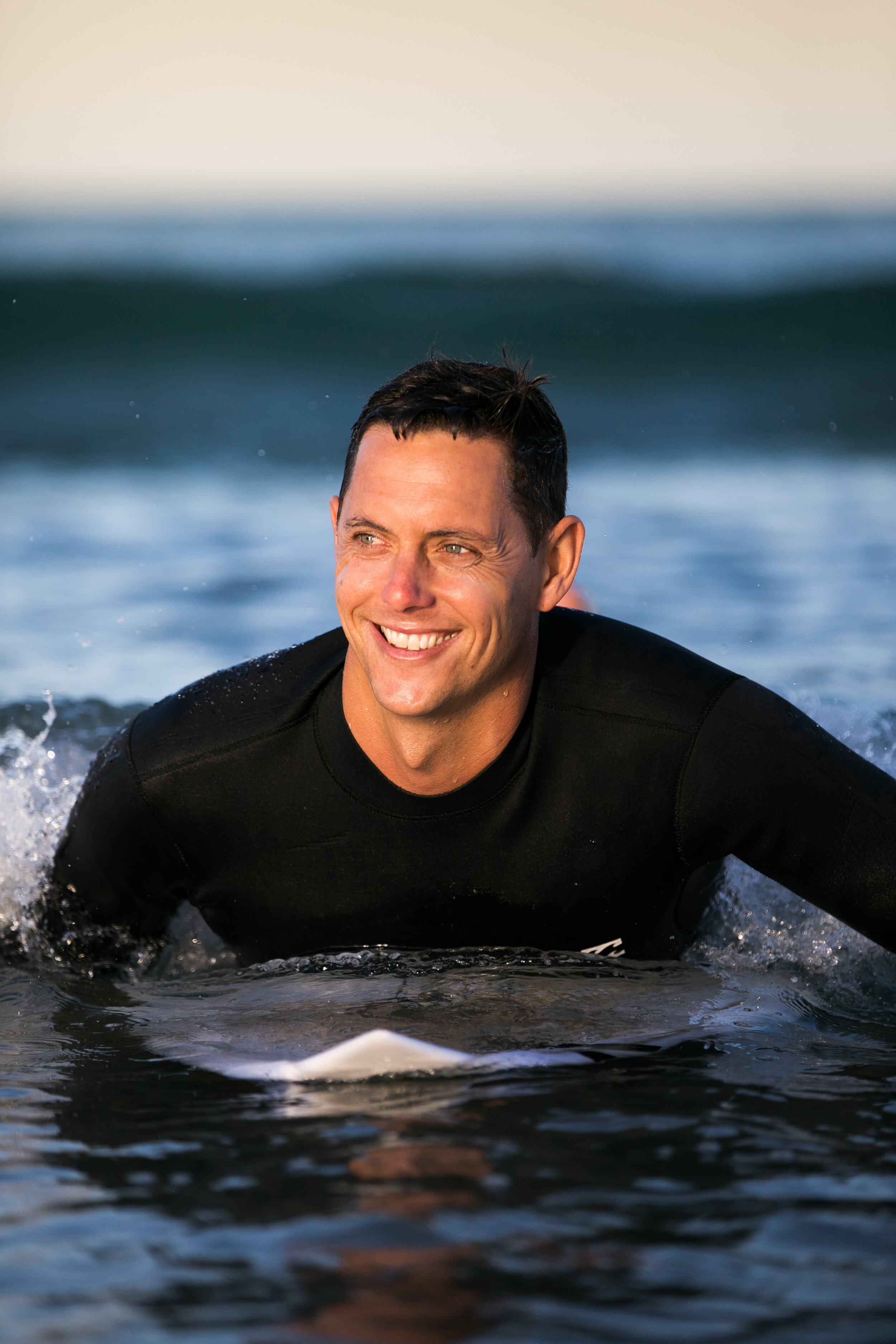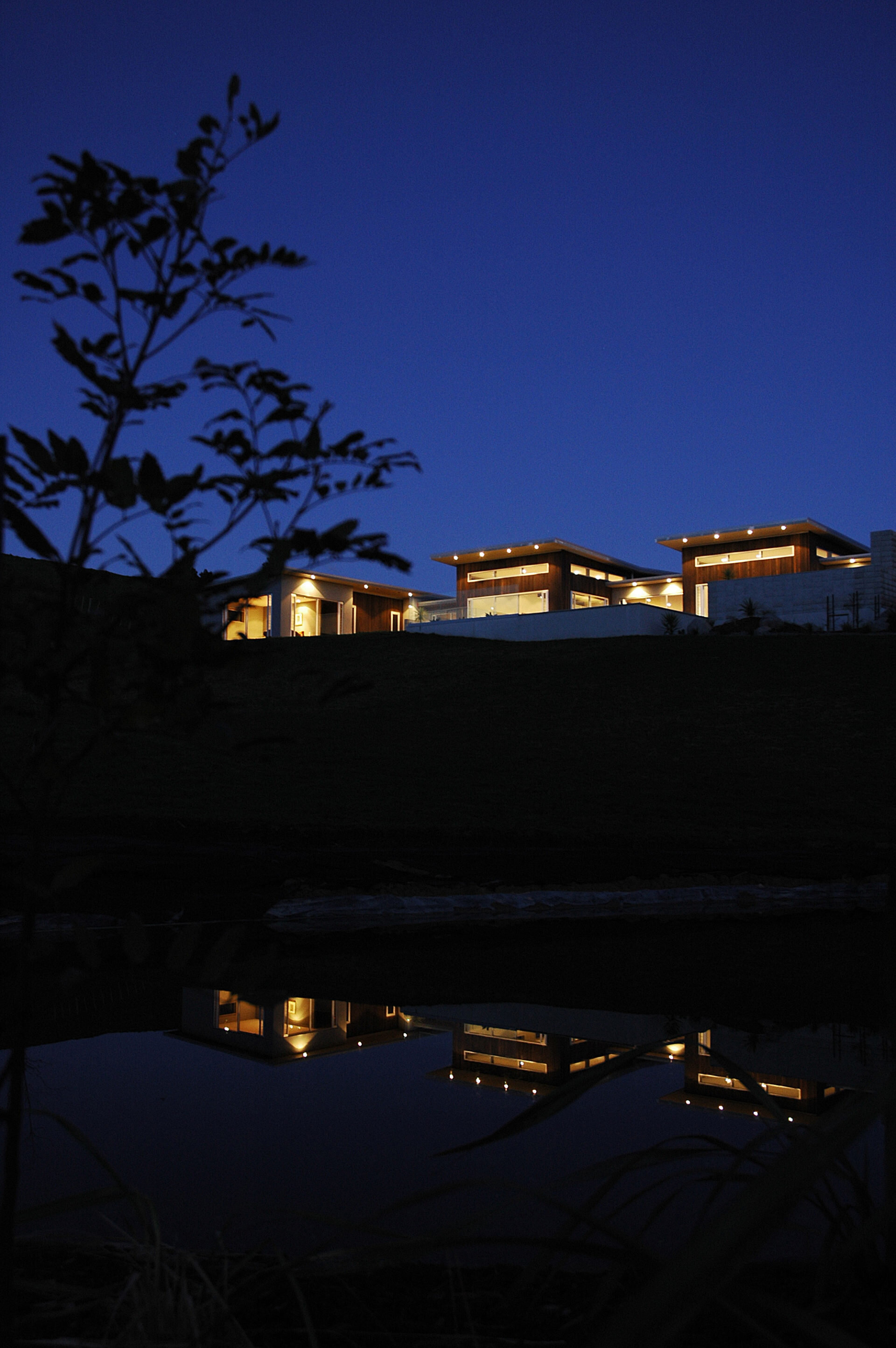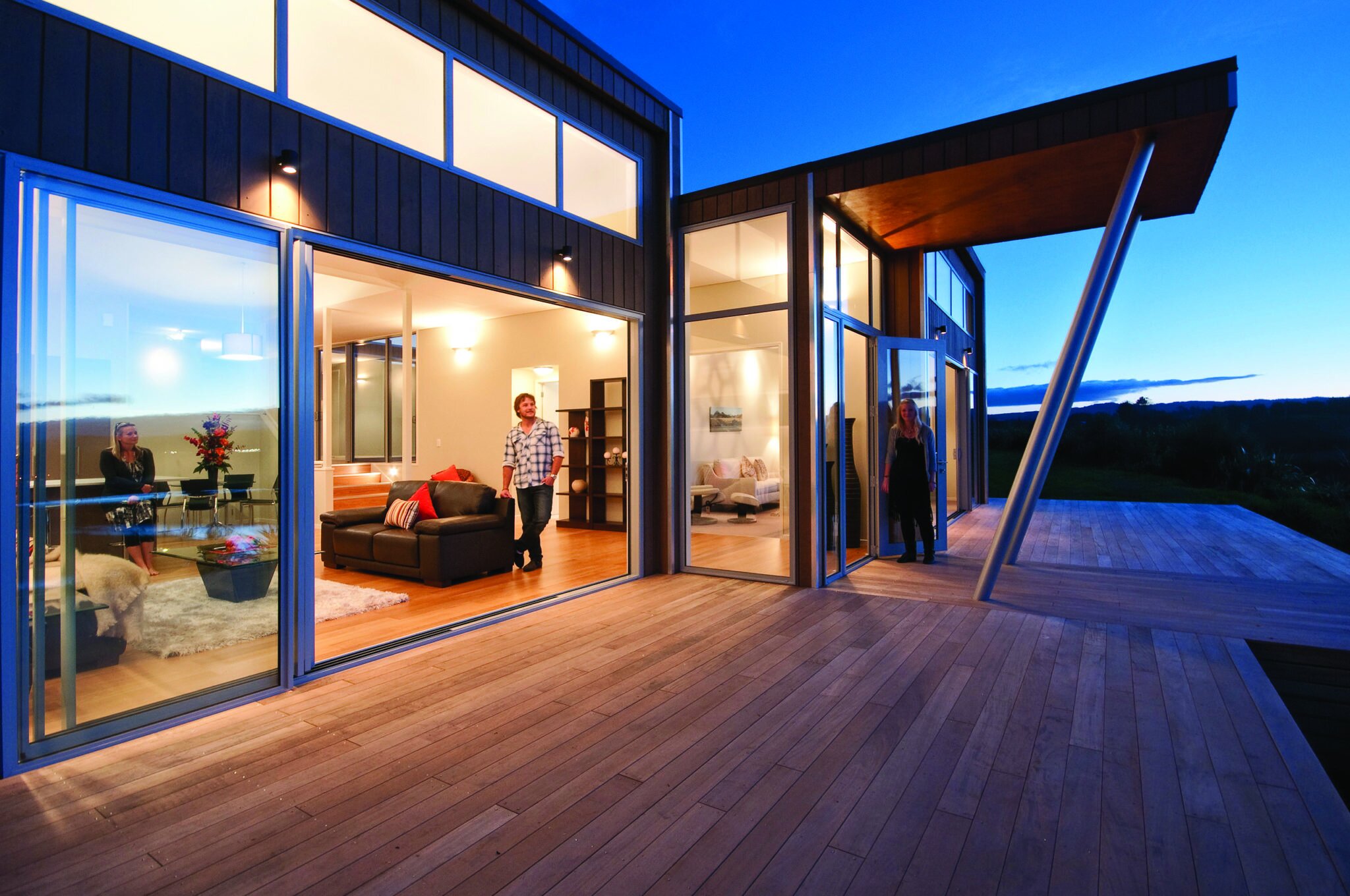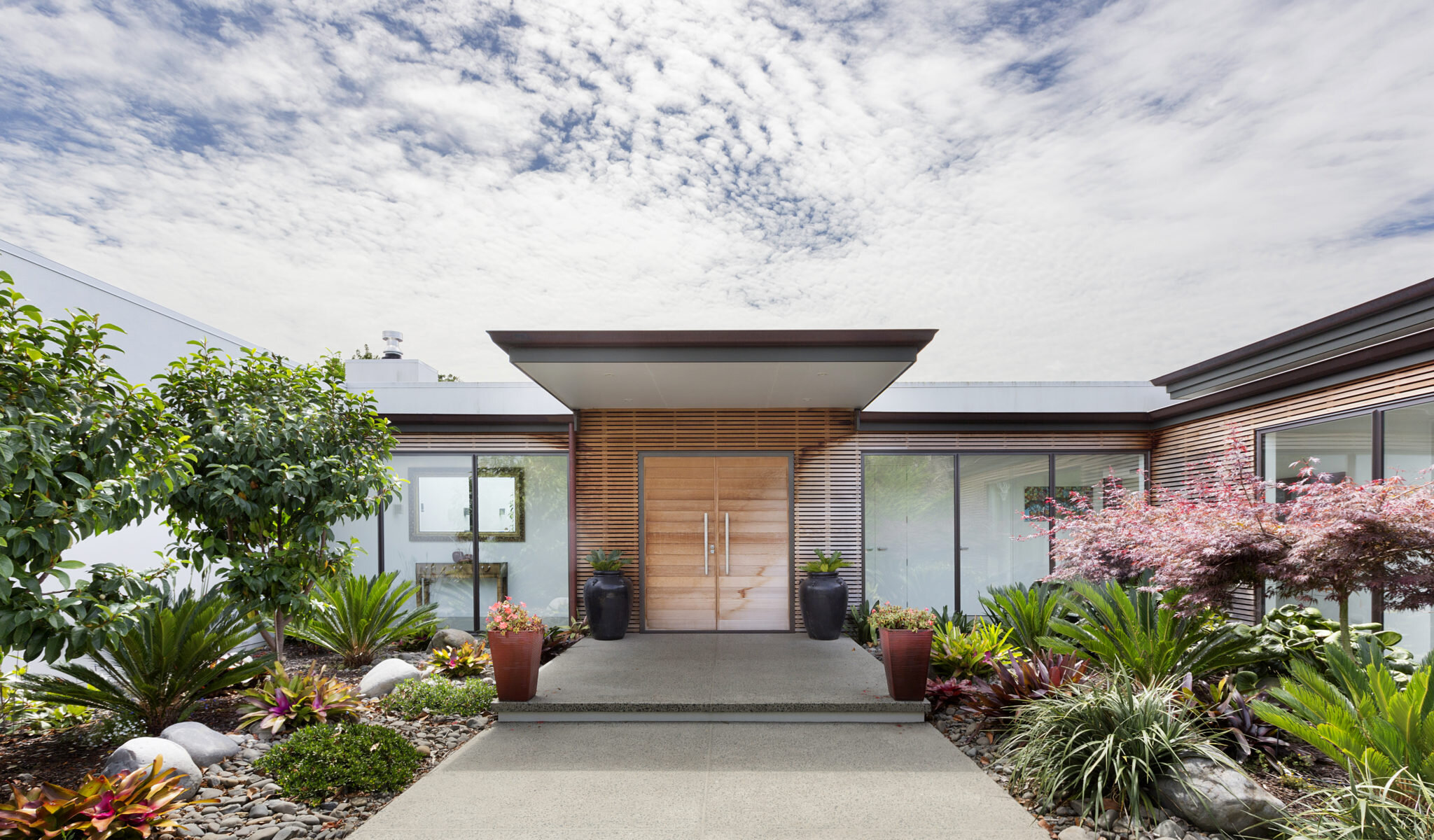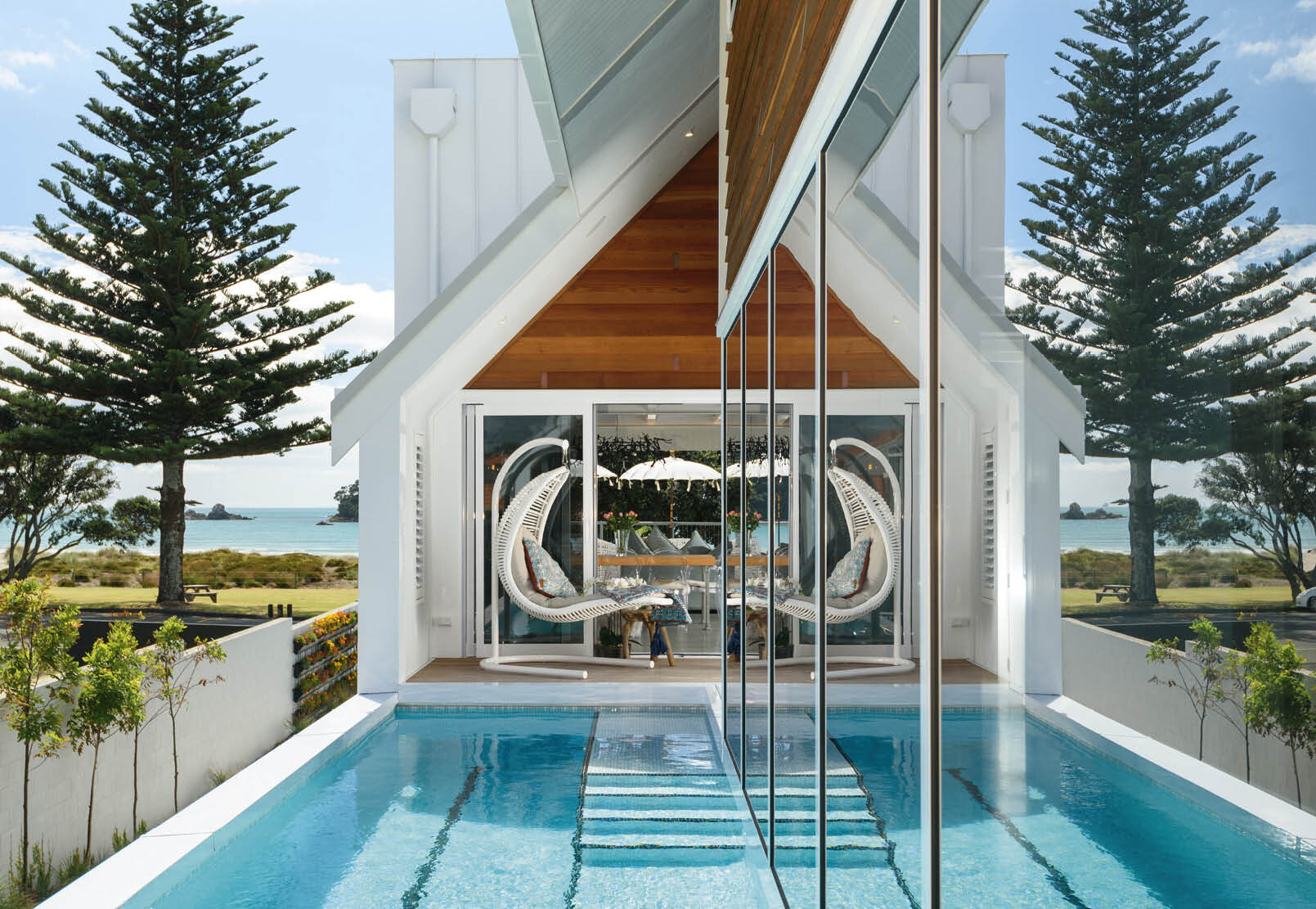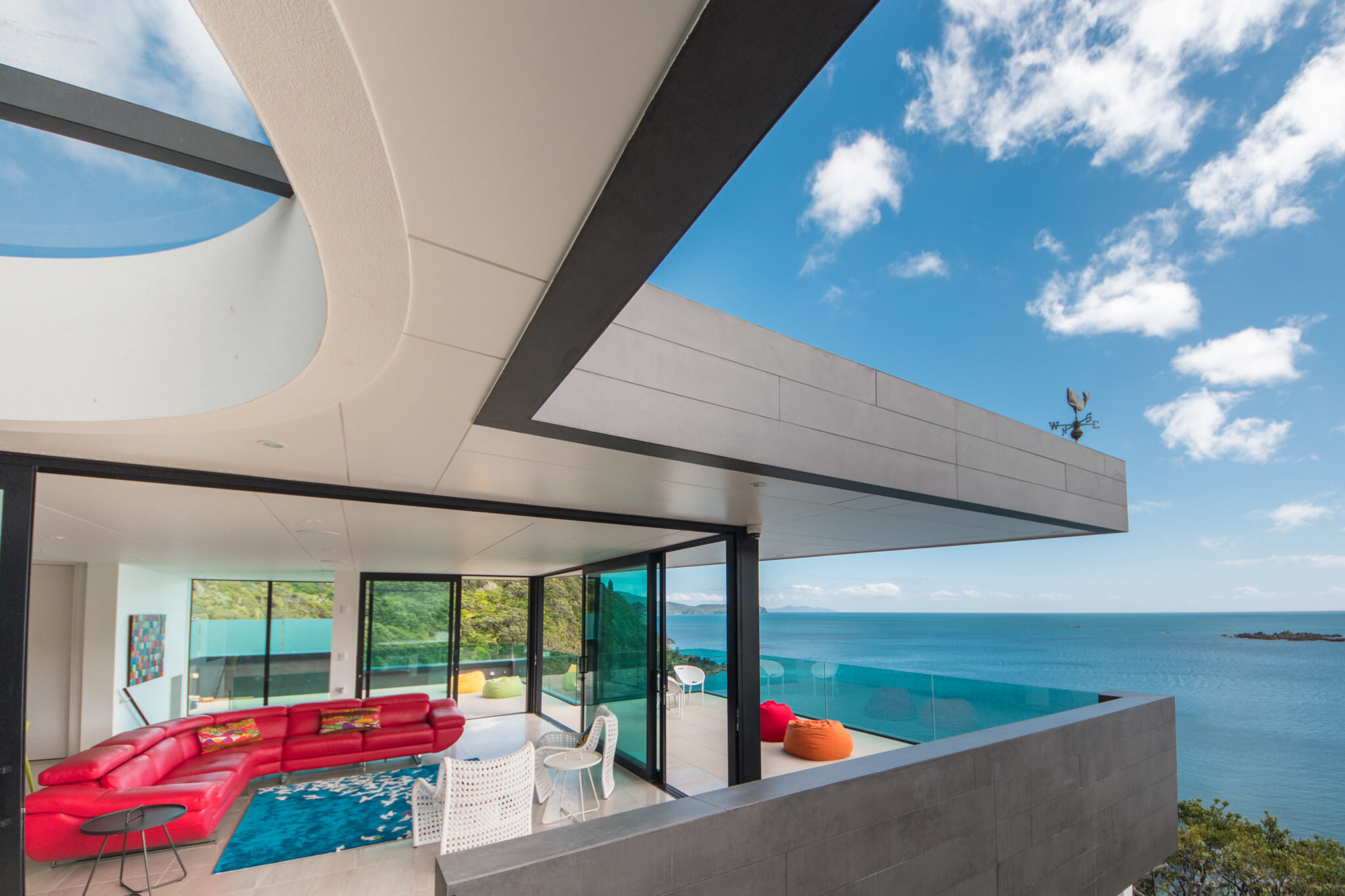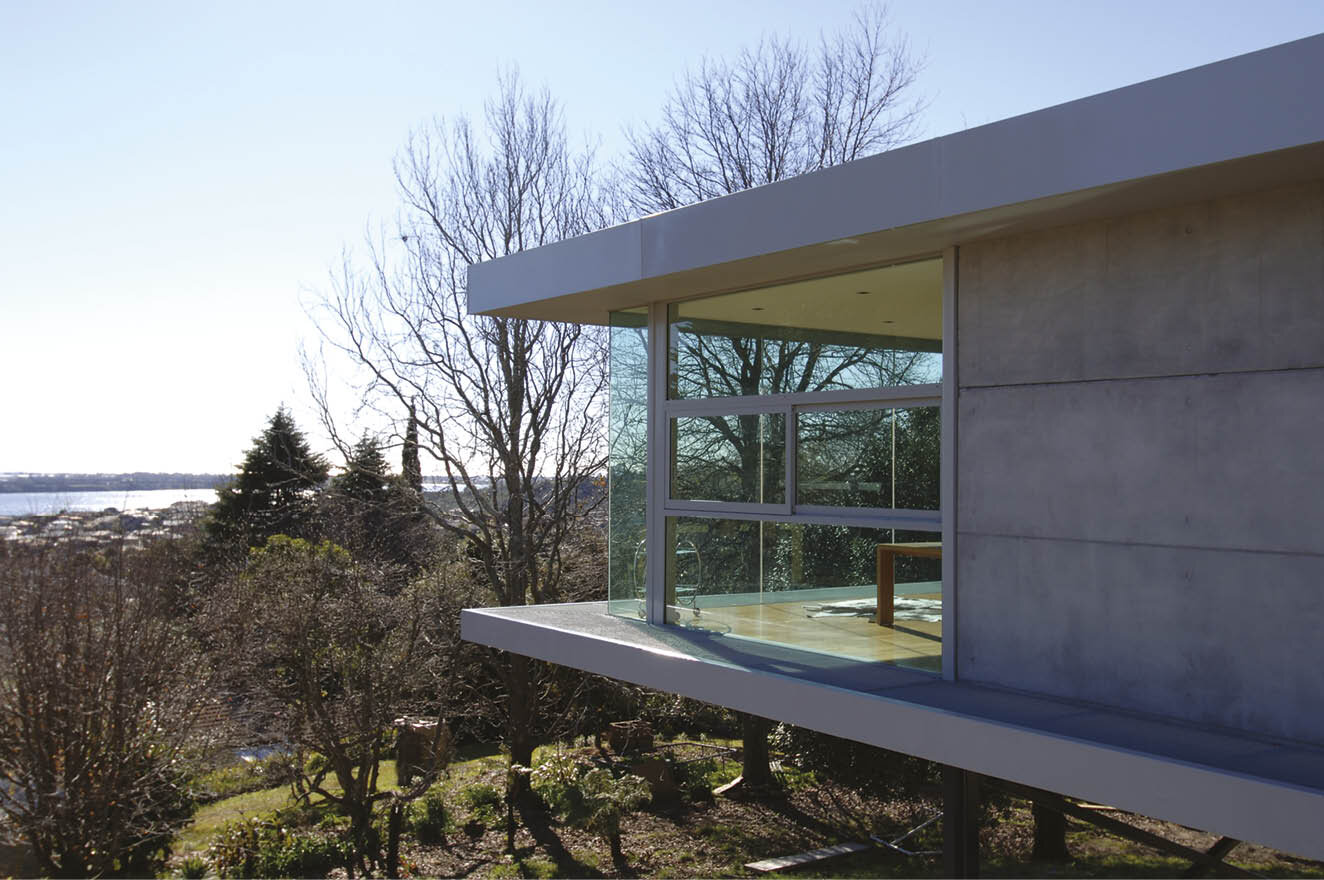How this mother-son homewares store found a new direction after devastation
At 5am on a Saturday morning, the phone rang; unanswered, it rang again. Then again. Sandy Crooks finally got to it. “I heard a pre-recorded message saying, ‘This is Tauranga Fire Brigade. Please attend immediately. 7 Clarke Road is on fire.’
Starting afresh, Sandali Home is once again brimming with treasures.
WORDS Nicky Adams PHOTOS Jahl Marshall
At 5am on a Saturday morning, the phone rang; unanswered, it rang again. Then again. Sandy Crooks finally got to it. “I heard a pre-recorded message saying, ‘This is Tauranga Fire Brigade. Please attend immediately. 7 Clarke Road is on fire.’ And my heart – it just sank into my stomach,” Sandy says. “I threw on a sweatshirt and raced down there.”
Sandy initially assumed that Clarke Road Kitchen Eatery, her cafe based at Te Puna Village, was the premises on fire. But upon arriving at the scene, she realised that it was actually Sandali Home, the furniture and homeware store she co-owns with son Ali Mohammed.
This was just over a year ago, and the loss to the business was devastating. When Ali awoke to the news that Sandali Home had been decimated, he was “overcome with emotion.” Together, he and his mother Sandy had spent three years building up a successful store and, in a flash, it was gone.
The fire had started in a neighbouring premises and spread to Sandali Home, which was engulfed in smoke. Surveying the aftermath, Ali remembers, “I knew straightaway that it was going to be a case of starting from scratch.”
However, the ensuing onset of COVID-19, lockdown and travel restrictions have made this an epic journey that neither Ali nor Sandy could have imagined.
When the entrepreneurial pair first toyed with the idea of opening up a homeware store, it wasn’t the wildest of leaps. As Sandy says, “I had always dreamed of being an importer, and at my previous café, Delicacy in Eleventh Avenue, I introduced some of the lovely artisan home pieces that I adore.”
Ali, on the other hand, has grown up in a multi-cultural family (his father is Egyptian) and home was a reflection of travels and an appreciation of beautiful artefacts. He is a naturally warm person with a love of interior furnishings; together, Ali and Sandy realised they could create something really unique.
Throw into the mix Sandy’s acquisition of a new café situated opposite the premises, and the vision became reality: Sandali Home would not just be a store, but a destination.
Post-lockdown, however, it became clear that the way Sandali Home had previously sourced its stock would have to evolve. Shopping trips to rural Indonesian villages to handpick locally crafted treasures were – for now – on hold.
The 10 months it took to rebuild the store gave the pair time to plan the new direction for Sandali Home. It was imperative that they stay true to their original vision of unique, quality pieces, but the place they found themselves in slowly became even more exciting. Sandy, always positive, points out, “We have been able to take the stock in the direction that we were naturally heading towards – clean, simplistic, uncluttered, with neutral colours.”
Ali agrees. “We had seen exactly what people loved and we work to that. We’ve also expanded our gift range; customers often come looking for something really special but don’t want to travel further afield. Our beautiful handmade Japanese ceramic range, for example, has been flying.”
Buoyed up by the phenomenal support of the existing clientele who were thrilled to see them reopen, and excited about new customers, Sandy and Ali are quietly confident they have hit their stride.
As a result, Sandali Home has reemerged as a sleeker, more evolved version of its original, lovely self. The emphasis is still on the desire to support artisans and helping their clients to shop sustainably. They are still sourcing beautiful, hidden gems – always, as Ali says, “hunting and gathering”.
7 Clarke Road, Te Puna
07 552 4556
That’s lifestyle
A forward-thinking development on the cusp of Mt Maunganui and Papamoa brings together two unique destinations to redefine not just the way retirement villages look, but the whole concept of retirement itself.
A forward-thinking development on the cusp of Mt Maunganui and Papamoa brings together two unique destinations to redefine not just the way retirement villages look, but the whole concept of retirement itself.
WORDS Andy Taylor PHOTOS Jahl Marshal
Pacific Coast Village and Pacific Lakes Village are in prime locations close to the spectacular Bay of Plenty coastline. The setting is consistently voted one of New Zealand’s top beachside holiday spots, but these residential properties don’t just rest on the laurels of location, location, location. Instead, they’re creating an entirely new retirement experience as part of the Generus Living Group, who’ve built an unrivalled reputation since the 1980s for creating some of New Zealand’s most respected lifestyle villages.
Already an admired destination, Pacific Coast Village is a place people are proud to call home. As manager Carl Braddock says, Pacific Coast’s model isn’t based on the outdated concept of a ‘retirement home’ but is firmly rooted in hospitality. “Our team and our thinking come from a hospitality background, so we aim to offer something with a very different feel – something more like a resort, with lounges and eateries you’d be happy to visit and invite friends to visit,” he says.
It’s a concept that has very much found favour with locals. Many service clubs have gatherings here, and Pacific Coast’s The Grill Brasserie was voted 2019’s Restaurant of the Year by the Tauranga Beefsteak & Burgundy club; it’s a favourite among families in the area.
Given the Village’s setting and facilities, it’s easy to see why. The centerpiece Beach House Community Centre houses the brasserie, an eatery and a lounge; a club lounge bar; study, craft and activity rooms; a hair salon and spa treatment room; and a movie theatre. Taking design cues from the classic Kiwi beachhouse, the Summer House is home to a lounge and library area complete with fireplace and television, pool table, bar, kitchenette and dining space. Immaculate grounds, a pool, spa and gardens complete the picture, all backed up by the kind of elevated care that’s nice to know is there but doesn’t get in the way of enjoying life.
“I really think we’re doing something ahead of the curve here,” says Carl. “We run everything on a style and service level of 4 to 4.5 stars, while also offering advanced care. In March, we’ll add to this when construction of our Hikurangi independent apartments begins – these will offer a bit extra for residents who need some more help around the home and will even feature concierge-delivered vehicles for independence. This is a really active place – and we’re here to make sure residents get the most out of what this great location and community has to offer.”
This leading of the curve is echoed at Pacific Coast Village, which has state-of-the-art facilities and a true focus on wellbeing and community spirit. “We really set out to ask the question: ‘What is retirement living?’ and we’ve made a conscious decision to meet the needs of residents rather than have them adapt,” says manager Mark Vincent. “This worked very well – so much so that we’ve had visitors here ask, ‘Where’s the retirement home?’ when they’re standing in the middle of it!”
It’s an easy mistake to make. Pacific Lakes Village is fantastic, with buildings and facilities that merge with the coastal setting and park-like grounds, and come together to offer so much more than just somewhere to live. With the next stage of construction already underway, there is even more to come.
“Assisted living is the point of the village, but it wasn’t the starting point,” says Mark. “The model is to provide an active living lifestyle; it’s not just about ‘retirement’, because the generation that’s coming into that part of their lives isn’t stepping back from life, they’re starting again, and we’re here to make sure they make the most of that.”
The embodiment of this approach ranges from not just the more expected elements – such as great accommodation, man-made lakes and on-site restaurants and cafés – but to facilities not usually seen in retirement villages of old. “There’ll be a market garden, commercial glasshouse and climate-controlled growing house, and a variety of fruit trees scattered throughout, enabling residents to grow their own produce and connect with their surroundings,” says Mark. “In addition, the Lake House – which will be the focal point for the village and completed in 2021 – will have sweeping decks, a barbecue area, a bowling green and the like, and it’ll be operating off the grid, with solar power and a rainwater recycling system.”
Like Pacific Coast Village, Pacific Lakes Village is an active part of the local community. “This is a great location, close to the beach and shops but not isolated, so residents are still able to enjoy the city and the coast, and keep in touch with friends and family,” says Mark. “It’s a great lifestyle, a home away from home but with extra care there when you need it.
Everything under one roof
You might catch a glimpse of boxing champ Joseph Parker when you work out at this budding super gym.
Fit Nation
You might catch a glimpse of boxing champ Joseph Parker when you work out at this budding super-gym.
Meet the owners.
Monique Alvarez: With a background in beauty therapy and customer service, Monique understands the importance of ensuring every client is happy and comfortable with their experience at Fit Nation as soon as they step through the doors. She wants her members to feel as though they are part of a Fit Nation family and is committed to making sure she builds that connection with everyone. As someone who has a passion for taking care of people and helping to bring out the best in them, Monique’s approach to health and wellbeing is an overall one. She recognises the benefits that come with feeling good about yourself and believes nourishing your body from the inside out is just as important as fitness and exercise. Monique is looking forward to utilising the skills she has gained over the years to help people reach their goals through being attentive, supportive and a present part of their journey.
Nic Haldezos: At 19 years old, Nic joined the New Zealand Army, where he learned discipline and the importance of a strong work ethic. Those qualities have proven fruitful in his career. With a background in marketing and having graduated from AUT’s sport and recreation programme, Nic’s career in the fitness industry has spanned 10-plus years. He has spent much of his career managing and opening gyms across New Zealand and he’s excited about his new role at Fit Nation with big plans to help people make positive changes in their lives. Nic is also the son of a hairdresser, which is where he witnessed and learned about communication, mastering conversational skills and understanding the value of listening to a client. He believes being able to help one person can create change in a whole community and he’s committed to making that happen with the Fit Nation team.
What sets your gym apart from any other in Tauranga? Nic: It is 2000sqm of pure training turf and every corner of the place has been thought out so meticulously. There is nothing like this in New Zealand. We have an on-site massage therapist, nutritionist, physiotherapist, personal trainers, 360 biometric scans, a cafe and smoothie bar and boutique toilets and showers. We have 2021 Technogym cardio equipment, there are four separate group fitness rooms that will each run 15 classes, we have a full comprehensive boxing studio and spin rooms with walls that will light up with heart rates and exercise displays. It’s an experience.
What are some of the best features of your facility? Monique: We’re a one-stop shop gym and wellness centre. We’re able to offer everything in one place and the welcoming approach we have from staff shows we want to be there with you for your whole journey. We have infrared saunas, a Kids care zone so parents can work out knowing their children are taken care of, on top of the cardio and weights equipment, yoga, pilates and functional HIIT classes. Members can burn up to 600 calories a class. We’re just trying to offer everything under one roof.
How important is having a sense of community in your gym? Nic: Everyone can go to a gym and get results but not everyone can go to a gym and say they know everyone by name and can connect to each and every single staff member as well. We’re actually trying to change people’s lives here and by changing people’s lives we can change a community. What we create here in our first Fit Nation we want to be able to spread that through New Zealand.
What experience do you hope clients have when they’re at your gym? Monique: A positive experience as soon as they walk in the door. They might be stressed or rushing in from a busy day but after being greeted by our team and the positive energy we have at Fit Nation I hope they walk out from the whole experience feeling amazing each and every time.
150 Newton Street, Mount Maunganui - 07 575 0470
Now we’re talking
It seems Grant Child was destined to use his voice. Never mind his former life as a drill instructor – he’s called more than 9000 auctions during his 20 years as an auctioneer, as many as 54 in one day. He and his wife Cheryl live in an Otumoetai home he called to auction but didn’t sell under the hammer. As he listened to himself describing it, it sounded so good, he was sold!
His hammer-shaped cufflinks catching the light, Grant – who covers most of Eves’ auctions in the Bay of Plenty – sat down to enthusiastically talk some more to UNO, sharing tips, misconceptions, facts, figures and the ABC ‘buyer alphabet’, and mentioning the many charity auctions he calls, his sheer passion for the job... He says he never loses his voice.
There’s undoubtedly plenty to talk about, as auctions are on the rise. They’re the preferred method of property sale in the Bay of Plenty and they’re here to stay. Their clearance rate is incredible, says Grant, and they’re transparent – they give every buyer an equal opportunity to purchase and vendors the chance to pinpoint the buyer who’s prepared to pay the most. As such, they identify a property’s true market value.
Auctions are the method of sale that achieve the highest price in the shortest time frame, and Grant loves them. “It’s a thrill to bring the hammer down and witness people’s excitement,” he says.
Sweaty palms and buyers sitting on their hands for fear of an accidental upward arm jerk, Grant’s seen it all. Whereas some buyers love the thrill of an auction, others feel fear, fuelled by the worry that they’re going to pay too much. Grant’s advice for short-circuiting this is to establish three figures: what you’d like to secure the property for; the price you are happy to go to; and your walk-away, absolute ceiling price, so you don’t get forced into a position you can’t afford.
Talk auctions with Grant and you can’t help but notice the words “absolute nonsense” repeated again and again. That, he says, is because of the misconceptions people have about them. Here are his top five:
<subhead> Misconception 1: An auction is a failure if the property isn’t sold
Auctions are a process, says Grant, a complete marketing programme with different phases of activity spanning 90 days – 30 days leading up to the auction and 60 days post-auction (if the property doesn’t sell under the hammer). Phase one of the process begins when a property is listed. “During phase one, we gather market intelligence from buyers active in the marketplace and take that information back to the vendors so a realistic reserve can be set,” says Grant.
Phase two is the calling of an auction. It gives cashed, unconditional buyers (referred to as A buyers) the first opportunity to buy the property and the seller the chance to work with cashed, unconditional buyers in the first instance.
Phase three kicks into action if an A buyer hasn’t been identified and there’s the need to continue searching for a buyer or to work with people categorised as B or C buyers. B buyers are those who still need to do their due diligence by acquiring specialist reports, while C buyers are those who have an existing house to sell before they can buy another one. Both B and C buyers get the first opportunity to buy after an auction.
Grant says that if a house doesn’t sell at auction, it’s likely due to one of three things: the buyers identified aren’t in cash, unconditional positions; the buyers and sellers aren’t in agreement on the value; or buyers for the property aren’t in the marketplace as real estate agents work through phase one of the campaign.
Misconception 2: Auctioneers use vendor bids to put up the price
“When vendors sign our reserve form, they confirm in writing that they won’t position anyone else to bid and give the authorisation for the auctioneer only to submit bids on their behalf,” says Grant.
Misconception 3: Auctioneers put vendors under pressure to sell
“We present an opportunity,” says Grant. “When buyers say they’re not prepared to pay more, we suggest vendors ask themselves: ‘Does the offer allow you to achieve what you want to achieve to move on to the next stage of your life?’ If the answer is yes, we suggest they sell.”
Misconception 4: Auctions are only for high-price or unique properties
What it comes down to is willing buyer, willing seller, says Grant, whose highest sale price was $7,350,000 for a Coromandel orchard.
Misconception 5: First-home and conditional buyers can’t buy auction properties.
If this sounds like you, Grant says you should still view auction properties. If they don’t sell under the hammer, you can come forward.
EVES.CO.NZ
Fast facts
The Realty Group (Eves, Bayleys) is consistently selling between 60 and 70 percent of its properties under the hammer.
The number of Realty Group auctions is up 10 to 15 percent on last year.
During the month of October, Eves BOP and Waikato held 113 auctions, with 92 properties sold.
Life & soul
These furniture and homeware finds from interior designer Nicola Travis are a little bit boho and a lot less ordinary.
THE EXPERT - Nicola Travis
Nicola has a passion for creating inviting spaces by combining fresh whites with pops of personality in a way that’s unique to you. “It’s important to me not only to make your home beautiful and cohesive but also to shape your décor so it truly reflects your personality. Giving your house some soul will take it from ‘show home’ to ‘your home’.
These furniture and homeware finds from interior designer Nicola Travis are a little bit boho and a lot less ordinary.
WILDE THE LABEL 2. Menu Carrie lamp by NORM ARCHITECTS from PAPER PLANE 3. Interiors expert Nicola Travis 4. Small totem vase by ABS OBJECTS from MAKERS MRKT 5. Archer cabinet by INKAH 6. FOXTROT HOME 7. Grid cushion FOXTROT HOME 8. Vintage brass candleholder from FOURTH STREET HOME 9. Watering can by ZAKKIA from FLUX BOUTIQUE 10. Arnold Circus stool by MARTINO GAMPER from EVERYDAY NEEDS 11. Wabi lightshade by BOHÈME HOME 12. Mauao print by ALICE BERRY 13. Stoneware leaf vase by A&C HOMESTORE 14. Jaxon Lounger by A&C HOMESTORE 15. Ferm Living by A&C HOMESTORE 16. Nicola Travis
Helping kiwis supercharge their wealth
Ask Kristen Lunman when you should start investing, and she’ll tell you, today. Thanks to Hatch, the digital investing platform she co-founded, the world’s share markets are now more accessible to Kiwis than ever.
Ask Kristen Lunman when you should start investing, and she’ll tell you, today. Thanks to Hatch, the digital investing platform she co-founded, the world’s share markets are now more accessible to Kiwis than ever.
What does wealth mean to Kiwis? Lunman says that for her customers, it means having a full life that balances travel, work, family, friends, and health. Lunman saw limited options for ambitious Kiwis to grow their wealth and, as a woman balancing career, children and life, she felt the pain. It motivated her to start Hatch, which delivers a straightforward way for people like her to get their money working as hard as they do to earn it in the first place.
“We launched Hatch on a mission to help Kiwis supercharge their wealth and build good money habits,” says Lunman. “Term deposits and savings are no longer attractive options to grow wealth thanks to low interest rates and inflation.” With Hatch, Kiwis can now own shares in over 3500 US-listed companies and funds on the intuitive and straightforward platform.
“Property’s great, but you need a large amount of capital to get involved, and then you’re locked in. Building a business is another way to grow wealth but making a success of it is hard work and high risk, and again, once you’re in, you’re in.”
Owning shares in world-class companies and funds has always been an opportunity reserved for the financial elite, something that never sat right with Lunman. She saw a way to offer a fresh new approach to self-directed investing that’s designed for newbies to experts.
“We’ve built a simple, straightforward experience to help you take control, wherever you’re at. With Hatch, it’s not hard to back the pioneers that are shaping our future and benefiting from their success. From Netflix to Zoom, Tesla and Vanguard, when you approach investing like you’re backing a business or industry, it breaks down the mental barriers to getting started.”
It takes about three minutes to open a Hatch account. After transferring money into your account, the next morning, you’re ready to buy shares in companies and funds in the world’s largest and most liquid share market. It’s that simple.
“We want people to be shareholders in businesses because it’s a tried and tested way to meet financial goals over the long term. We’re not about trading stocks on a whim and trying to predict fluctuations in the markets. We want to help Kiwis build sustainable wealth over time, through great financial habits.”
For Lunman, the best investors are mindful investors. This means considering why you’re investing in the first place. This level of self-awareness helps you stay calm and make smarter choices. “Being mindful means you don’t panic when your shares fall in value. There are always going to be ups and downs in share prices, but over time, the highs in the markets should outweigh the lows.”
As part of Kiwi Group Holdings alongside Kiwibank and Kiwi Wealth, Hatch has grown and benefited from the backing and wisdom of one of New Zealand’s most trusted financial names whilst staying completely autonomous. And the Kiwi family has benefitted from a fresh, innovative new brand. Win-win.
Buying a slice of a company or a pioneering industry like fake meat or cannabis and watching it grow and shape our future is exciting. Shareholders in the likes of Apple, Tesla, Beyond Meat and clean energy companies are looking ahead and hoping to benefit from megatrends that are changing the way we live. Why not join 65,000 other Kiwis and to do the same?
Local never looked so good
Leading fashion store Wallis has been rebooted and is back at the Mount with all the labels you know and love.
Leading fashion store Wallis has been rebooted and is back at the Mount with all the labels you know and love.
WORDS Jenny Rudd / PHOTOS Salina Galvan
In February 2020, fashion retailer Wallis made the call to close its doors after 30 fabulous years of dressing local women in New Zealand-made clothing. Anna Mountford and her parents Carol and David handed over the keys to their Devonport and Mt Maunganui stores, and got to thinking about what to do next. Seven months later, Anna relaunched Wallis at a brand new site at the Mount.
"I seriously considered going into education, but in the back of my mind, I was always thinking about a shop of my own,” she says. “I thought my friends would be really shocked when I told them, but they weren't. They all said, 'Thank goodness!’"
With hangers and mannequins still in her garage after closing Wallis before lockdown, things fell into place really quickly. Anna rang around her suppliers and picked up the relationships again, and the perfect new location came up on Maunganui Road. "We've had a fantastic start,” says Anna. “Lots of our key labels had been optimistic about the future and cut extra stock, so we had some beautiful pieces to open with. Every day people come into the store and say they’re pleased Wallis is back.
"It felt like the right time to close, then it felt like the right time to open,” she continues. “I’ve able to put my own touch on things, like the styling of the shop, but we still have the same core beliefs. We care about the people who make, sell and wear our clothes, and as we’ve done for 30 years, we stock local labels. It's easy to support local when the quality is this good."
WALLIS.CO.NZ
The rise of the local rock star with his feet firmly on the ground
At the start, the band sat down and wrote on the back of a pizza box a list of things they wanted to achieve. Hit songs and house purchases were included on it – not exactly drugs, groupies and throwing TVs out of hotel windows. As Joel points out, though: “It’d be different if we were a group of 29-year-olds, but we’re not.”
WORDS Nicky Adams PHOTOS JOEL MCDOWELL
Like any self-respecting frontman, L.A.B vocalist/guitarist Joel Shadbolt has that certain something you can’t quite put your finger on, the upshot of pure talent mixed with a palpable drive. Add the edge that makes his vehicle of choice a Harley-Davidson, and it’s a heady mix. But Joel’s also a man with a firm grip on reality, so although he may perform to sold-out stadiums, he’s also happy to mow his mum’s lawn.
L.A.B is riding high on a wave of success. After a year of chart-topping brilliance, November’s Aotearoa Music Awards saw them pick up two prestigious gongs for Best Roots Artist and People’s Choice. They’re currently working on their latest album, L.A.B IIII, due for release in January. It’ll be their fourth, with the previous three making waves in the industry and gathering the band a following that (on social media, at least) increases by the minute.
It was the 2020 summer single In the Air that created the seismic shift that took the band from successful to household name. It’s one of those tunes people just can’t get enough of, crossing genres and leapfrogging age groups to get everyone tapping their feet and singing along. It’s nothing short of musical gold.
Despite L.A.B standing on mixed-genre musical terrain (soul, reggae, blues, R&B, funk…), the latest album sees them really grow into their groove. Reflecting on this, Joel says, “There’s always a common thread between the albums, and like any band, the sound evolves over time. This album has more strings, which we only dabbled with a little bit on the last album, and we’re using a horn section for a couple of songs. We’re experimenting with different instruments, which in turn makes you try out different styles. We’re not a band that’s stuck in one place – we’ve got reggae, funk, blues and electronic influences in there.”
I wonder if the pressure of trying to follow one chart-topper with another leads to a less natural or experimental creative process. Joel thinks not. “In the past, we’ve tried to write in a way that’d suit a certain market, going in with the mentality ‘Let’s write a hit’, and that’s never worked for us,” he says. “We figured out quickly that to write well, we just need all the instruments set up in the room and to jam as a band. That’s when the best stuff comes out. It’s interesting that as one song out of 40-odd, In the Air is what people gravitated towards. It’s not a ‘pop’ song as such. It was an organic, jam-an-idea-then-press-the-record-button type of song.”
The thing about this kind of out-of-the-box success is that the follow-up is going to be hotly anticipated and expectations sky high. You’d imagine this would make releasing the new album a bit nerve-wracking. “Definitely,” says Joel. “But our approach has always been the long game – to be a band that writes albums, tours a lot and builds a solid fan base from the ground up. We’re doing what we love. Yes, all eyes are on us, and there’s the ‘Can they do it again?’ question, but we felt that pressure with the first album, which put us into the vortex. Although the second album didn’t do so well, with the third – boom! We’ve taken that same concept and I think the songwriting is stronger. We’ve been playing together for five years now, so there’s a very strong chemistry and that’s a key ingredient in good songs – a band that’s cohesive and works together. I think our fans are going to love this next album. It feels really cool.”
When Joel got the call from founding member Brad Kora in 2015 to see if he was interested in joining L.A.B as its lead singer, he knew it was a once-in-a-lifetime opportunity. Never mind that he believed his main strength was as a guitarist rather than a vocalist – he jumped at the chance. Brad and his brother Stuart were already big names in their own right with their band Kora, and Joel himself had grown up a fan of their music, so he couldn’t sign on the dotted line fast enough. “Preparation met opportunity, and I was prepared to sacrifice everything for that moment,” he says. With Joel, Brad, Stuart, ex-Katchafire member Ara Adams-Tamatea and Miharo Gregory in the mix, the chemistry took hold, and the first album proved it was a winning formula.
“Preparation met opportunity, and I was prepared to sacrifice everything for that moment.”
In many ways, Joel seems too grounded to be the New Zealand rock idol he’s become, although music has been his world from the start. Growing up in Papamoa, he went to the local primary school then onto Mount College, staying for three years before the decision was made to move him to Bay of Plenty Polytechnic (now called Toi Ohomai Institute of Technology), where he’d been offered a scholarship to study a two-year diploma in performance and production. On completing this, he studied jazz for three years.
“While I was at polytech, I went to a summer music academy in LA,” says Joel. “That was a moment where I realised that if I wanted to take my music seriously, I had to study on a higher level. At that time, you could either study classical or jazz at a tertiary level, and if you wanted to get good at understanding the harmony of contemporary music, that was the way to go.”
The Shadbolt household was a musical one. His dad is professional country singer/guitarist and his mother is also a music enthusiast, boasting a collection that would make anyone with an ear for a tune weep. With songs by Jerry Coker, Van Morrison, The Doors and The Doobie Brothers the soundtrack to Joel’s early years, he still loves those ’70s beats today. Busking and playing in cover bands and other groups at local pubs was his rite of passage, as was the usual OE, which he spent in Cornwall.
Joel returned to New Zealand when his father fell ill, and felt a shift once his dad passed away. It was time to get serious about his life goals. He joined L.A.B the following year; five years later, they’re one of New Zealand’s hottest bands.
The celebrity part of fame is hard to get your head around, says Joel. “You’re never ready for the attention that can be thrown at you – no one teaches you how to deal with that. The energy it requires to have your game face on every day just isn’t natural.”
We talk about fellow Kiwi band Six60’s upcoming documentary, Till the Lights Go Out, in which its members discuss their vulnerabilities and struggle to cope with the level of success they’ve achieved. Joel can identify with how they sometimes find themselves in a dark place. “Your world gets noisy,” he says. “I used to sit and play guitar all day, but it’s like your reality gets flipped. I’m doing what I love, but now there are other things that are a part of that.”
“You’re never ready for the attention that can be thrown at you – no one teaches you how to deal with that. The energy it requires to have your game face on every day just isn’t natural.”
Being a musician is, after all, not the same as being a performer. In a sense, the two go hand in hand, but the performance aspect is notoriously daunting for many talented musicians. Joel agrees that talent doesn’t guarantee the X-factor needed to front a band. “In the early days, I struggled with stage presence and confidence,” he says. “I worked on being more outward with my personality and learned a lot just by playing and being in a band with musicians who had toured on that level and played the bigger stages, just how to work the energy of the crowd a bit better, as well as my energy as a performer. That’s something I’ve crafted over the last four or five years. I’m constantly refining and analysing.”
As seasoned musicians, Brad, Stuart and Ara have been generous with their guidance, and not just in a musical sense. At the start, the band sat down and wrote on the back of a pizza box a list of things they wanted to achieve. Hit songs and house purchases were included on it – not exactly drugs, groupies and throwing TVs out of hotel windows. As Joel points out, though: “It’d be different if we were a group of 29-year-olds, but we’re not.”
Having been on the circuit for some time, the older band members were all too aware that fame is transient, and so is the influx of cash. To ensure financial harmony, the group set themselves up equally, in a similar way to bands such as U2 and the Rolling Stones. “It doesn’t matter who writes the songs – up the guts, it’s an equal spread through the whole band. The person who writes the hit song doesn’t get the credit, the band gets the credit, and everyone gets an equal share of that pie, which is key to everyone feeling ownership of the band and working hard because you’re getting paid properly. It keeps you accountable. We want to be a band that has depth; we want to be here for 30 or 40 years. The success is amazing, but we’ll carry on regardless.”
It’s this focus and work ethic that sees the band tour relentlessly. They don’t take their fans or success for granted, and continue to play at everything from small venues to stadiums and arenas. Covid-19 has obviously changed the dynamic, with the international side of things stalled for the time being. However, Joel doesn’t seem too fazed by this and social media means L.A.B’s still getting its name out there. Pre-pandemic, the group had been making inroads into the Australian market, largely via the ex-pats over there, and there are still a few opportunities coming up. They’ve got their feelers out in the US and Europe too.
Joel has his head screwed on in some areas, yet he’s still a loose cannon in others. He had a minor mishap on his motorbike earlier this year, but it’s part of his rockstar DNA (and possibly his actual DNA – his mum is also a biker). His accident couldn’t have happened at a worse time, just a day before the band was due to open for Fat Freddy’s Drop in front of a massive crowd. Things weren’t looking too peachy for a guitarist with a dislocated shoulder, but despite being told he needed to stay in hospital, in true frontman style, Joel topped up on painkillers and whisky and played on.
The ability to temper success with reality is in part what makes Joel and the rest of L.A.B such an awesome combination. Fame’s not the incentive – bringing beautiful music to life is what drives them. They don’t take themselves too seriously, and if this wasn’t obvious before, Brad’s acceptance speech for their Best Roots Artist Award well and truly captures their spirit. He told the audience: “Five years ago, I met Joel, I was writing this song and we had about two fans. I was looking for a singer and I heard this guy on the Good Morning show, and he sounded like a black man, so I looked at the TV and it was this ginga...” As Joel basked in Brad’s humour, it was clear that a prouder, fair-skinned redhead could not be found in all of Aotearoa.
FUN FACTS ABOUT JOEL
Joel’s 29, an only child and with the world at his feet, would still rather live right here. Town, country or beach? “I’m not fussed,” he says. “As long as I’m in the Bay, I don’t really care.”
If he could play with anyone, he’d play with Eric Clapton. “I’ve listened to him across his whole career,” says Joel. “His voice, his songwriting, his career has been massive.”
What’s one gig he wishes he could have been at? “I’d have loved to be a person in the crowd at Wembley watching Queen, with Freddy Mercury singing and Brian May on guitar.”
He still teaches beginner guitar lessons. “There are parts of my old reality I don’t want to change and I love teaching,” he says. “So on a Saturday night, I’m rocking out to 1000 people, but on a Tuesday, I’m teaching a kid how to play a G.”
Changing the way we stay
Auckland’s The Hotel Britomart is the new kid on some beautifully restored blocks. UNO owners Jenny Rudd and Mat Tomlinson checked in.
PHOTOS Supplied
Auckland’s The Hotel Britomart is the new kid on some beautifully restored blocks. UNO owners Jenny Rudd and Mat Tomlinson checked in.
With its cool, sustainable design; sweeping views of city and sea; soft, pristine sheets; and the kind of bathrooms you'd swap a child for, The Hotel Britomart has recently opened its 5-Green-Star-certified doors. If Auckland's the new ‘international’ for those of us from the provinces, we're more than happy to make the trip to experience it.
The spring sunshine was warm and bright when we arrived at the two slender brick towers of the Cheshire Architects-designed hotel, part of a 15-year restoration project of the historic Britomart precinct. The towers are artistically studded with irregularly arranged windows overlooking nine revitalised blocks and that 5 Green Star rating starts outside – at least 50% of the water used in the concrete was recycled and every brick is handmade.
Inside, we were greeted by hotel manager Clinton Farley, who served us kawakawa tea while pointing out elements of the design, explaining in fascinating detail where they were salvaged from and how they were restored. We felt like we were standing inside a brand new piece of history.
Want to book a stay for yourself? Be sure not to make other plans if you do, because between our hotel highlights below and the inner-city attractions on the doorstep, you really won't need to leave the 'hood.
The lobby
They broke the rules here and we liked it. There's a story behind each space and the innovative fit-out means (in a good way) that you can't really tell where the reception is, unless one of the friendly staff is checking you in.
Our favourite thing: The nook with terracotta-coloured fabric walls and a cream built-in sofa.
The rooms
The 99 rooms and five luxury suites are perfectly proportioned, styled with warm neutrals with an emphasis on texture.
Our favourite thing: The Sans[ceuticals] organic hair and skincare products in the bathrooms.
The restaurant
As the name suggests, Kingi (short for ‘kingfish’) champions seafood. Just like the rest of the hotel, everything served is sustainable.
Our favourite thing: The mushroom bolognese on toast we had for breakfast.
THEHOTELBRITOMART.COM
The art of architecture
In-demand architect Camden Cummings talks about his grand designs for homes in the Bay of Plenty.
WORDS DANIEL DUNKLEY / PHOTOS SALINA GALVAN
In-demand architect Camden Cummings talks about his grand designs for homes in the Bay of Plenty.
For Tauranga architect Camden Cummings, designing a home is all about marrying the “pragmatic” with the “poetic”. Sure, a home needs the right number of rooms, a big enough kitchen, and space for your cars, but it also needs somewhere for those moments with the family, a spot to relax and read a book, or a deck to take in the view.
“Architecture isn’t just pragmatics, it’s an art of pulling different elements together,” Cam says. “Good architecture stands apart as it creates special spaces. A home is a container of your memories. It’s where you retreat from the world. You spend so much time there, so you need it to feel special.”
On Marine Parade, Cam has combined the pragmatic and poetic to great effect. A new home on the Mount’s most exclusive street has fellow architects talking, and Cam’s business, Cummings Studio Architects, recently won an NZIA Waikato Bay of Plenty Architecture Award for the split-level property overlooking Mount Maunganui’s main beach.
The award marks a huge early win for Cam’s Tauranga-based company. Before forming his own business, Cam worked for a large national firm behind the concept for the redeveloped Tauranga Airport and Waikato University campus in Tauranga. Out on his own, Cam is keen to add further architectural interest to our cities and suburbs.
An artist and designer at heart, Cam has formulated ideas his entire life. Hailing from Waihi, he initially cut his teeth as a draughtsman, building up skills in technical software and design in New Zealand and Europe. He then spent several years in Australia, studying for a masters in architecture, later working on commercial projects in Melbourne and Brisbane.
After settling in the Bay of Plenty with his wife Peta – an interior designer – and two children, family homes are at the top of his agenda.
“Designing residential homes on a smaller scale is what I love,” he says. “It’s more meaningful working with mums and dads and families. With commercial projects, you’re two or three people removed from the decision-makers. I prefer a closer relationship.”
Cummings Studio Architects was established in 2017, and finished its first award-winning project last year. The grand design, nestled in the heart of Marine Parade, is private enough to feel tucked away from the street, but open enough to view waves crashing towards the beach.
It’s easy to see why the home has earned recognition. The lower floor is split into two sections: a kitchen and dining area with views of the beach, and a “sunken” private lounge. The property strikes the right balance between views and privacy; the front is framed by glass, but occupants in the upstairs bedroom can close things off with timber shutters.
“When we tackled the project, one of the biggest issues was the road,” Cam says. “How could we retain the view of the waterfront, and not make it a fish bowl? For privacy, the bedroom is often at the back of the plan. The client wanted the master bedroom at the front but also wanted to control their privacy. It was a simple solution for them, in the end.”
The Marine Parade house boasts a courtyard between two modern living quarters, and, once inside, people can view the full length of the property. Despite its size, the home doesn’t feel sparse or vacuous, but well-proportioned and warm.
Cam enjoys the challenge of meeting people’s demands, tackling the practicalities, and pairing it with his own creative vision. At the start of each project, clients write a brief and set a budget. Ideas are then pulled together, and cutting-edge technology is used to give clients a glimpse of their creation.
THE PROPERTY STRIKES THE RIGHT BALANCE BETWEEN VIEWS AND PRIVACY
Cam’s practice likes to design the bathrooms and kitchen joinery in his projects, to ensure that design intent is followed through. “These are smaller representations of the larger house, so are equally as important,” Cam says. He pays meticulous attention to detail to ensure cupboards, tiles, bricks and taps match the aesthetic of his design. Only “honest” natural materials are used for the finishing touches. “So many homes look like they’re designed by two different people –I don’t want that,” he adds.
Cam says realising a client’s brief and budget is the most important part of the job. When projects come together, as they have on Marine Parade, a happy homeowner is the most satisfying thing of all, he says.
“One of the nicest things is hearing from the clients at the end. “For me, that’s all it takes – to know they love the house and feel their expectations were exceeded, and that they have a special space to enjoy. As an architect, that’s the biggest compliment you can get.”
The hotspot eatery stoking the embers for local foodies
The opening of Fife Lane is the realization of a nine-year dream for Ryan and Kat Dippie, who along with their passionate team, transformed the space on Mt Maunganui’s Central Parade into an industrial-chic restaurant.
An experience like no other on Central Parade in the Mount.
WORDS KATE UNDERWOOD / PHOTO KENRICK RHYS
The opening of Fife Lane is the realisation of a nine-year dream for Ryan and Kat Dippie, who along with their passionate team, transformed the space on Mt Maunganui’s Central Parade into an industrial-chic restaurant. The hotspot eatery is impressing locals and visitors with everything from Gisborne wagyu scotch with blue cheese butter to Coromandel mussels with saffron cream and plenty of vibrant Central Otago pinot noir.
As avid diners themselves, Ryan and Kat felt there was a significant gap in the area. “If you didn’t want to go over the bridge or right down to the Mount, where could you go?” Kat says. Drawing inspiration from New Zealand restaurant stalwarts like Jervois Steak House and Botswana Butchery, Kat says they wanted to create a quality dining experience that complemented other offerings already in the Bay.
Having spent the last nine years as owners of Rain Bar in Papamoa, Ryan and Kat utilised the expertise and collective knowledge of their dream hospitality team to create Fife Lane. Kitchen manager Robbie Webber, frontof-house Keri Harman and bar manager Scott Hinton were all sent on a two-year research stint in Melbourne, to hone their skills and bring back a wealth of fresh inspiration.
The result is an extensive menu specifically designed to provide food that feels both accessible and remarkable. Opt for the Hawke’s Bay lamb shoulder with minted pea puree which is served with crumbed sweet breads, or – from the steak selection – the under-rated French bavette cut. Smaller plates include tender calamari with miso mayo, and a pork belly with cauliflower purée and feijoa chutney. Among the sides, paprika buttered corn cobs and golden beer-battered onion rings are lining up to be favourites, and, from the sharing section the eye fillet beef Wellington and the seafood paella would be fabulous for a crowd.
Taking inspiration from butchers of the past, a custom-built glass meat locker sits at the heart of the space. This fine looking chill room houses an array of aged meat cuts – from West Coast savannah Angus sirloin to a Wakanui Angus rump. And if you order from the cabinet, you also have the luxury of selecting your own steak knife, presented at the table in a bespoke wooden box.
Wine is Ryan’s thing, and he’s dedicated an entire room to housing their diverse range. With barman Scott, they’ve handselected every bottle, including several vintages from across New Zealand and a sprinkling of international varietals. They have wine glass styles fit for every drop, whether it’s a bright Chablis, a German riesling from Kat’s sommelier friend, a pinot blanc blend from Mt Rosa, or Mumm by the glass.
The extensive cocktail menu – which includes a few interesting twists on classics – and the considered whiskey list are served from an immaculate white-tiled bar, which is an elegant contrast to the dining room’s bold black palette and natural wooden elements. The oversized tables were custom-built to allow enough space to comfortably accommodate mains with plenty of room for sides.
Ryan and Kat’s concept for the sophisticated fit-out came to fruition with the help of designer Stacey Smith of Twentyfivebees. Together, they created spaces suitable for intimate dining, families and larger groups. Ryan’s brother Owen Dippie installed his signature tiki artwork which leads to the charming rear dining room where Owen’s wife, Erin, has lined the wall with striking images of whole fish and scotch fillet steaks.
Alongside kitchen manager Robbie’s 30 years of experience, chef Dan Lockhart helped curate the menu, utilising a rare Spanish Mibrasa oven that takes centre stage in the kitchen. The closed barbecue design uses embers (instead of flame) to add a distinctive hint of charcoal to dry-aged scotch and charred asparagus. There’s also a smokey apple pie for dessert and, if that’s a little heavy, a theatrical mocha-gato dessert cocktail could be for you.
While steak is an obvious focus at Fife Lane, it’s far more than a steak restaurant; with options for the meat or seafood-averse such as gnocchi with Kaimai mushroom, broccoli, garlic butter and Parmesan. Ryan is a charismatic host who’ll happily tell you his favourites on the menu and steer you towards the chef’s specialities. But, back to that steak knife box – being offered a choice of blades to slice the tenderest of cuts is an experience which just doesn’t happen often enough in life.
Two mates with a masterplan for the Mount’s booming music scene
Day and night, there’s always something on the go at multi-functional Mt Maunganui venue Totara St.
Day and night, there’s always something on the go at multi-functional Mt Maunganui venue Totara St.
As Tauranga and the Mount’s population skyrockets, the music and arts scene is growing along with it. The attraction of the city to touring bands isn’t just about the size of the audience, though – it’s also about the fantastic venues at which they can play. The Mount’s Totara St events centre is such a place. By day, it’s a music school, but at night, it morphs into a rock ’n’ roll superstar.
Totara St co-directors Ross Shilling and Jay Munro met almost 10 years ago through a mutual friend. Both share a passion for the music industry – Ross has been in bands, owned venues and worked for years as a sound technician, while Jay had been involved in the promotional aspect of the industry in his hometown of Whangamata, where he juggled making surfboards with promoting bands and acts on the side. Together, they set out to create a venue that incorporated multiple facets of the business and, says Ross: “The masterplan was what we’ve ended up with.”
Realising their vision was no mean feat. According to Ross, “We looked at this place and it seemed almost set up, so we decided to jump in boots and all, and build a venue.”
Patience and elbow grease brought the project to life. The final push was opening for the 2012 Tauranga Jazz Festival, which had booked Totara St to host a poetry reading. Jay says it was “a bit like being on The Block TV show, with things really running down to the wire.”
In retrospect, they’re surprised that the organisers put such faith and support in them, but they proved worthy of the show of confidence, as all was up and running in the nick of time. Except, that is, for the missing toilet doors; Ross and Jay say it was open-plan or nothing for that event!
Walking through Totara St today, it’s plain to see why it’s gone on to become so successful. The music school side of the business is front of house, and the layout perfectly suits its purpose – from the comfy, retro-feel lounge to the rainbow-bright classrooms. A staff of around 13 contract tutors offer lessons on most instruments, and pupils love that they have the opportunity at the end of every term to perform as a band on a professional stage.
The events side of the venue is another thing altogether. Access is through a side entrance that leads into a sleek space with pared-back décor, a mezzanine floor complete with bar, and a huge stage fitted with sound equipment that’d blow the boots off even the most experienced roadie. Considerable investment has been made into this equipment – the set-up boasts a Martin Audio sound system, built-in acoustic panels and a lighting rig that ensure a first-class experience for audiences and bands. Without the hassle or expense of having to haul in their own gear, the process is greatly simplified for performers, adding to Totara St’s appeal.
Totara St has earned its stripes, and today the line-ups here are a heady mix of local and international players. From British acts such as musician Midge Ure and ska band Bad Manners, to Kiwi names such as The Black Seeds, White Chapel Jak and LAB, the list goes on. Ross and Jay have been savvy enough to realise that variety pays dividends, so they offer a variety of genres – entertainment for all sorts of age groups and musical tastes.
Despite their success, the pair aren’t the type to rest on their laurels. They’re currently developing the catering side of the business, the Chur!Coal barbecue and eatery, which allows Totara St to tantilise the tastebuds of 20 to 400 people for parties and all manner of corporate events, from functions to team-building sessions.
Totara St is one well-run business, and one that has a huge appreciation for the community it operates in. Its ability to shapeshift to be as appealing to Millennials as it is to Baby Boomers and band members is amazing – and that’s rock ’n’ roll baby.
A good night in next to nothing.
Gregory Davidson from George Street Linen says to invest in the best bed linen, your body and your wellbeing will thank you for it.
Gregory Davidson from George Street Linen says to invest in the best bed linen, your body and your wellbeing will thank you for it.
Don't wear pyjamas. That's the advice from bed linen expert Greg Davidson at George St Linen in Whakatāne. He says if you invest in the most carefully sourced and woven sheets and duvet covers, then you don't want anything else on your skin.
Textiles for life
Gregory has been in textile design for 40 years in New York, Sydney, China, everywhere! He’s travelled the world supervising the production of textiles and design.
The textile centre of the world moved to China, so he lived in Shanghai from 2003 and supplied businesses like John Lewis and Macy's with their own branded linen. He’d been living in Shanghai with 25 million other people, and in 2018 visited Whakatane. “I thought, what a cute little town with no traffic lights! I fell in love with it and saw a 1920s garage for sale, so I bought it, filled it with beautiful bed linen, and here we are,” says Gregory.
Gregory’s guide to the best fibres when it comes to bedlinens:
Au naturel
I'm a great believer in natural fibres. We use cotton, linen, bamboo, wool and merino. The benefit is that they are all temperature regulating, keeping you warm in winter and cool in summer.
Cotton
Our cotton is a blend of American, Australia and Chinese. We spin the same cotton, one yarn, and we weave it in different waves. We use the same supplier of yarn as Calvin Klein uses for his underwear.
Percale
A plain weave with a smooth surface, so it's more likely to keep you cool at night.
Sateeen
There are more yarns on the face than on the back, so it's a buttery soft weave, giving a shiny effect that's very soft.
Cotton jersey
This is knitted on a circular machine. We do a reverse twist on every second yarn.
Linen
Our linen is Belgian. We like it because there is a low minerality in Belgian water that makes the linen very strong when it's processed.
I'm linen all the way, it's my personal favourite.
Merino
There are so many benefits with New Zealand-made merino, so I had a sample duvet cover made and slept in it. Total heaven, and very easy to throw in the washer and dryer. I think we are the only ones in the world, I haven't heard of merino duvet covers before.
Colours
We are seeing earthy colours like clay, olive, hazel, cypress. Mustard is being used as an accent, the shot of yellow is very popular.
See the full range at
16 George St, Whakatane
Sisters & Co, 208 Maunganui Rd, Mt Maunganui
A dash of the special sauce.
British-born chef Ian Harrison is in his happy place at Tauranga’s newest Italian eatery.
New restaurant Sugo serves Italian food at its finest – fancy-ish but wholly fuss-free.
When Ian Harrison says Tauranga’s new eatery, Sugo, is his happy place, it’s a comment to savour. He’s opened 19 restaurants and hotels on behalf of others, five of them in two years as an executive chef, and cooked his way around the world for 20-plus years working with chefs of high repute and at Michelin-starred restaurants. Until recently, his dream was to own an intimate fine-dining restaurant, but now he’s toned it down a tad – and he couldn’t be happier. He suspects New Zealand has rubbed off on him.
British-born Ian is chef and co-owner of Sugo, which became a tasty addition to Tauranga’s eating scene in early November. “It’s contemporary, seasonal, fresh and a nod to Italy, but it’s also no fuss,” he says. “I now know I’ll never open that fine-dining restaurant I used to dream about. I just want good, fresh food in a relaxed setting. I think I’ve become a Kiwi!”
Ian came to New Zealand for eight months, 10 years ago. He fell in love with the country – and one of its inhabitants, whom he’s since wed. Five years were spent in Auckland then it was on to the Bay of Plenty, where he was executive chef at Alpino and Clarence. At Alpino, he sharpened his skills in Italian cuisine; at Clarence he fine-tuned his European-Kiwi tools. “Those combined, brought me to Sugo,” he says.
On Wharf Street, Sugo is hard to miss. The facade of the Italian-inspired eatery is green, white lights and planters hang overhead, and red umbrellas shelter tables topped with terracotta plant pots. There’s an abundance of décor wow indoors, where a variety of seating options cater for 60 to 70. Alfresco dining numbers (when the Wharf Street upgrade is completed) will sit at 50.
Sugo’s tagline is “Italian inspired” and Ian believes anyone who’s been to Italy will taste the connection. Ian, who preserves and ferments as well as cooks, enthuses over seasonal and fresh food, and says pasta and antipasti are stars, as are unsung heroes in the meat world. ‘Sugo’ means ‘sauce’ and there’ll be plenty of that – he’s a dab hand at making them and they’re a key element in Italian cooking.
Instead of fussing excessively over presentation and the addition of numerous ingredients, Ian says he’d rather spend time finding suppliers (he has about 19) who offer top-notch products. “I want to source the best ingredients I can find, do as little as possible to them, then deliver so the products can sing. He doesn’t see the need for too many ingredients per dish, either, nor an extensive menu.
Ian and business partners Josh Fitzgerald and Warren and Megan Lippi-Smith have ensured Sugo dining is also relatively affordable – most mains are $30 and nothing’s over $35. A lunch menu will be added in February, perfect for those working in the CBD. Oh, and free of charge are dog biscuits made on-site for visiting pooches.
“I’m cooking good food, enjoying myself and making my mum and dad proud,” says Ian. “This place reminds me why I got into doing what I do.”
Column: Craig Orr shares his secrets to property success
Craig Orr shares his secrets to property success and explains why there is nowhere like the Bay to call home.
Growing up, my family had a bach at the Mount on Oceanview Road, so we’d escape Hamilton and spend our summers here by the beach. But it wasn’t until I met my wife Natasha not long after I moved back to New Zealand from Perth that I finally moved to the Bay for good. Tash was working at clothing store Augustine, and one day I went in there with my sister and son Duke (now 11), who was two at the time. It was instant fireworks. Now Tash and I are raising our daughters, Estelle (7) and Ivy (3), while Duke, a budding surfer, lives in Jan Juc in Victoria. Safe to say I’m itching to see him when the trans-Tasman bubble gets going!
Being in real estate with Bayleys means I have the flexibility to be there for my kids a bit more. I live for the mornings when we scooter to school and kindy. It’s that close-knit-village feel of our city that makes it such a fantastic place to work and raise a family.
I started as a lifestyle-property agent but naturally moved into residential property through referrals and as my family-minded clients moved around, selling their properties to upgrade or downsizing after their kids had moved out. I cover much of Tauranga and the outskirts, from the Mount to Waihi Beach, but you’ll often find me in Omanu, Te Puna and Tauriko. The best part is I’ve made some really good friends working in the business. I even attended the wedding of some great clients who recently got married on the Te Puna property I sold them.
People buy from agents they trust, and I can tell almost instantly how a buyer feels about a home. You can sense it – and that’s the key to being a great agent.
Just the other week, I had a woman wanting to buy a property I’d listed, but she needed to sell hers first. We got it on the market for her and sold it within a week. To help someone make the move they want to make in a stress-free, positive way is what it’s all about.
As a former landscaper, part of what I bring to the table is my hands-on experience in making a home more liveable when it comes to the backyard. In the Bay of Plenty, so many of us live outside, so I can help clients see how to create the ideal outdoor spaces.
In my twenties, I moved to Western Australia to play semi-professional rugby in the coastal suburb of Cottesloe. It was through the club I met a French stonemason and learned the ropes. That led me to setting up my own landscape construction business alongside a friend and carpenter. We grew it into a successful business, but in 2011, after 15 years, it was time for me to come home. The shift got me thinking about how long I wanted to stay on the tools, and after chatting with my good friend Stephen Shale – a Bayleys auctioneer who was then manager of Bayleys Waikato – I was motivated to follow my passion into property, where I’m proud to say I’ve been for nine years.
I also couldn’t do it all without my personal assistant, Corinne Littlejohn. You need to work as a team and she’s my backbone.
On weekdays, you can find me heading up the Mount with my phone torch at dusk. In the weekends, between open homes, I get down to the beach with the kids and out on my surfboard whenever I can. That’s the thing about living here – you can have a busy day, but the minute you head up the Mount or hit the sand, it all just washes away.
The multisporter making his own way in the world
For four-time Coast to Coast champ Sam Clark, dodging explosives in China and kayaking from Sweden to Finland are what makes adventure sports not just a hobby, but a way of life.
WORDS Sue Hoffart PHOTOS Graeme Murray
For four-time Coast to Coast champ Sam Clark, dodging explosives in China and kayaking from Sweden to Finland are what makes adventure sports not just a hobby, but a way of life.
Endurance athlete Sam Clark credits cartoons with kick-starting his career as a jet-setting adventurer and multisport titleholder.
In recent years, the tenacious Welcome Bay resident has managed to dodge explosives in a Chinese quarry and container ships in the Baltic Sea. In February, he ran, biked and kayaked across the South Island in just over 10 hours to scoop the prestigious Coast to Coast world multisport championship. It was the fourth time in five years that he’d won the gruelling 243km race from Kumara Beach to Christchurch.
His early forays into sport were far less successful. As a boy, Sam proved uncoordinated with a hockey stick and similarly awkward with a soccer ball.
By age 10, he had his priorities sorted. If the painfully slow school bus couldn’t deliver him home in time for his favourite martial arts cartoon, he would bike to and from Otakiri Primary School himself. Given the school was 11km from the Clark family abode in the rural Eastern Bay of Plenty, Sam easily clocked up more than 100km of riding each week. It also set a precedent; if he wanted to venture into downtown Whakatane on the weekend, his parents knew he could cycle the 70km round trip himself.
Young Sam had discovered the joy of independent travel and found himself quickly, accidentally fit.
“By default, I became one of the fast kids,” the 30-year-old recalls. “And winning cross country was pretty important at primary school. Once I was fit, running opened doors.”
Sam and older sister Sophia began training for triathlon competitions, piling in the back of their father’s ute to swim train at Lake Rotoma. From a young age, the siblings also embarked on challenging multi-day tramping and kayaking trips in Urewera National Park with their outdoorsy parents, Environment Bay of Plenty Councillor Bill Clark and recently-retired primary school teacher Alison.
Sam suspects his thirst for adventure was inherited from his poetry-loving father, who had lived and travelled in Africa, owned sawmills and gave up an accounting degree to become a deer culler. Bill Clark also competed in the Coast to Coast multisport event that his son would go on to win four times.
“Growing up, complaining was not an option. I think there’s something in my blood that makes me push myself to do mad things,” says Sam.
The school teacher’s son was also studious and bookish and a trumpet-playing member of the Bay of Plenty Brass Band till age 14. To earn any screen-watching time, he and his sister needed to chalk up the equivalent period in music practice.
At Whakatane High School, Sam discovered interschool multisport races. He borrowed a mountain bike, dusted off his father’s old kayak and fared unexpectedly well against a much bigger pool of teenage peers. Hooked, he asked his parents whether he might perhaps have a racing kayak for Christmas.
“I woke up Christmas morning to find there was a splitting axe under the tree. It was their way of giving me the opportunity to earn it, and I spent most afternoons and holidays splitting firewood,” explains Sam.
It took months of work to earn the $2000 ticket price.
“By the time I could afford the new kayak, I had the strength to paddle it.”
Even before he was legally old enough to hold a licence, Sam would load up his prized craft and drive 10 minutes down country roads to the Rangitaiki River, to practice paddling.
His final year of high school was a blur of entry forms and weekend races, including the rugged Motu Challenge multisport race where he finished fourth amid an adult field. He was only 18 when he entered and won the non-elite, two-day section of the Coast to Coast event for the first time.
“I thought I might truly be good at this kind of racing, but how could I fund it?” recalls Sam.
Unwilling to face the prospect of more full-time study, he opted instead for a mechanical engineering apprenticeship at the workshop where he had spent his school holidays. While he was an able enough worker, Sam was not a model employee.
“I was constantly at odds with my bosses about staying late or doing overtime because all I wanted to do was go and train. And I was taking a lot of unpaid leave to go do sports events around the country,” says Sam.
For four years, his apprentice’s wage was spent on race entry fees, travel and sporting equipment, ticking off Ironman events and world championships, eight-day expedition races with a team and individual challenges in New Zealand and overseas.
Once he had his fitter and turner’s qualification in hand, Sam continued to mix work and sport.
“A lot of athletes my age dropped away. They went to uni or couldn’t fund themselves any more. But I was always able to find work and some way of getting to the start line. Eating baked beans, using borrowed gear; if you really want to do it, you’ll somehow make it work.“
Disappointments came with the wins and placings. A planned trip to Europe, for a season of cycle racing, had to be abandoned when Sam tumbled off his mountain bike and broke his wrist. Those events that didn’t go well only served to spur him on.
“I thought I’ve got to train harder, come back better, more well trained, better prepared and faster,” says Sam.
“I made an awful lot of mistakes but I learned from them. What to eat, what not to eat. What gear to use. Lining up and doing ultramarathons, thinking running 90km will be easy, then having to walk 40km at the end because I didn’t fuel properly, or train.
“There’s nothing like the absolutely darkest moments to learn from.”
In China, Sam has raced through northern provinces using Soviet-era maps to traverse roads that no longer exist. He has paddled on the Yellow River and through one of the world’s largest cave systems. In later years, mobile translation apps have helped him communicate with friendly, curious locals as well as fellow Chinese competitors. Once, he and his teammates found themselves in the middle of a quarry, surrounded by explosives.
“There were sticks of dynamite and blasting caps in the rocks around us. What did we do? We ran extra fast to get out of there! No, my mum doesn’t know about that,” laugh Sam.
“But part of what makes racing in China so appealing is that when you finish each day, all the teams sit around a dinner table and share war stories, so there’s a lot of camaraderie involved. It’s the hardest and most challenging races I’ve ever done, in places nobody has ever heard of.”
Some destinations are easier to love than others. He talks fondly of a particularly satisfying world swim-run championship event in Sweden that involved 72km of running and 12km of swimming between islands in the Stockholm archipelago. The spectacular scenery was part of it, and the Baltic Sea’s low salinity level meant he didn’t need goggles and the water tasted almost sweet.
Sam has become far more appreciative of the places racing takes him. He now makes a concerted effort to stay with local residents, to explore and try the local cuisine rather than focussing solely on race preparation and recovery. His favourite memory of a French alpine event involves staying with a local family for a week and helping them concrete their driveway.
The failed soccer and hockey player has certainly discovered the joy of being a valued part of a team. He has found his tribe; a like-minded international group of adrenaline-fuelled athletes who have taught him about organisation, team dynamics, friendship and the thrill of pitting himself against a series of outrageously difficult challenges.
Two years ago, when he raced – and won – with the Swedish military adventure team, he found himself paddling from Sweden to Finland.
“It was terrifying. You’re in the middle of the open sea with towering waves, in kayaks that aren’t up to the job, trying to avoid enormous container ships and knowing you just have to keep going, turning back’s not an option,” says Sam.
“For me, it’s such an exciting, unpredictable way of living.
“I don’t always look forward to a race, sometimes I dread it. I put an awful lot of pressure on myself… And yes, I do that in life as well, because all this has an opportunity cost. I look at friends who have gone to uni, have steady jobs, own houses and sometimes you can’t help but compare what you have.
“But of course, I’ve now had 15 years of travel and adventures. It opens you up to having these absolutely wild experiences you could never hope to achieve any other way. I love the sense of fulfilment. I certainly wouldn’t change it.”
Boy meets girl
Sport and social media brought Welsh medic Zoë Cruse into Sam’s orbit.
The pair became Facebook friends after he spotted the dreadlocked doctor out for a run in Whangarei, where she was working in urgent care after emigrating from the United Kingdom.
Then, when Zoë was living in the Philippines and Sam was racing in China, they found themselves in similar time zones and began chatting online. Once they were both back on New Zealand soil, they met in person for the first time. On their second date, mutual love was declared. By their sixth date, in the summer of 2018, she agreed to move to Tauranga with him.
Since finishing her medical degree, Zoë aims to spend six months practicing medicine and the other half of the year travelling and teaching yoga or scuba diving.
“The reason we are so good together is because our lifestyles are similar and we have similar values,” she says.
“I think I’m a bit nomadic, I have the worst itchy feet. Helping people and making a difference to people is a big part of what I do but I’ve never wanted medicine to define me. It’s one of the things I do.”
Zoë is also an amateur triathlete and a current member of Tauranga’s musical theatre group.
A locked-down world
Sam and partner Zoë ought to be in Europe right now, recovering from an Ironman-style event in Germany. But the global COVID-19 pandemic has scratched almost everything from the international racing calendar and removed Sam’s ability to earn from sport.
“COVID-19 really forced me to evaluate the way I’m living a little bit,” Sam says. “Without having an income stream from overseas races, I’ve had to go back to doing a bit more work using my trade.”
He is currently working as a landscaper, taking engineering work when he can and studying towards an engineering diploma, while fitting in 14 to 20 hours of training each week. And he considers himself one of the lucky ones.
“There are an awful lot of athletes out there stacking shelves or making coffee to make ends meet. They are really struggling with their own sense of worth because there aren’t races to target and work towards. And that’s not just professional athletes.
“For now, overseas events are not going to be a reality for most Kiwi athletes. It certainly makes you appreciate what we’ve been able to do in the past.
He says domestic events are starting to pop up again.
“One I really want to do is the Geyserland Mega Grind, a 700km bike packing race from Rotorua to Gisborne and back via Urewera National Park,” says Sam.
“In the absence of overseas travel, I’m turning my sights back on grassroots New Zealand events. This is a great opportunity to look at what we have in New Zealand. People flock here from all round the world to fulfil their sense of adventure and there are still many parts of the country I have not been to.”
Where to spend the last of the warmer weather
After enduring a year of uncertainty in 2020, the summer has been sweet and internationally envied here in our Aotearoa bubble. But with the sun setting earlier and earlier at the day’s end, it’s time to take advantage of the lingering warmer days by exploring everything that our backyard has to offer.
After enduring a year of uncertainty in 2020, the summer has been sweet and internationally envied here in our Aotearoa bubble. But with the sun setting earlier and earlier at the day’s end, it’s time to take advantage of the lingering warmer days by exploring everything that our backyard has to offer.
After enduring a year of uncertainty in 2020, the summer has been sweet and internationally envied here in our Aotearoa bubble. But with the sun setting earlier and earlier at the day’s end, it’s time to take advantage of the lingering warmer days by exploring everything that our backyard has to offer.
From the East Coast to the West, there is something for everyone. While we still have the glorious sunshine, pack your bags and take off with your family, friends and lovers for one last summer adventure!
Even if you’ve used up all of your annual leave, the pandemic has altered our ability to work from anywhere – even holiday. No longer confined to five days a week in an office and desperate for a change of scenery from Working From Home (WFH), Booking.com has predicted that we’ll see a significant rise in the “workcation”. Nearly a third (32%) of travellers have already considered booking somewhere to stay in order to work from a different destination. Now that there are zero excuses to not book that last minute holiday, you can dial in to your next Zoom meeting from the beach!
For inspiration on where to enjoy the last of the summer sun, and to find award-winning properties to stay at on your trips, read on. Each of the following properties received a Booking.com Traveller Review Award in 2021, meaning they’ve been globally recognised for making travel experiences more memorable for all. With the frequent unforeseen changes in our ability to travel, Booking.com offers flexibility and a range of convenient cancellation options when you book, so you can still make plans and feel confident you won’t lose out if last-minute changes come up.
Located on the rugged West Coast of the North Island, New Plymouth offers stunning 360-degree views of the Tasman. The ocean surrounding Mount Taranaki makes this place a party for the eyes, so make sure you’ve packed your camera.
If you’re keen on hitting the surf, dabbling in a wide choice of scenic walks, or if you’re there for the great selection of food and drinks, New Plymouth is a great place to explore.
Surf or swim the world-renowned Fitzroy beach and catch the sunset across the beautiful west coast. Stroll the unmissable Coastal Walkway, stretching the entire length of the city, or go for a feast at the ‘Social Kitchen’ in Powderham Street.
WHERE TO STAY
After a day’s exploring, head along the coast to the beachside town of Oakura where the charming Ahu Ahu Beach Villas await. Set on a vast hill top with incredible oceanside views, the villas offer the perfect spot to enjoy an evening BBQ and grab a bottle of wine, as the sun sets on the stunning West coast skyline.
These unique villas are oozing with charm and character making for an extra special end to a fantastic summer.
Hahei is a must-do on the summer itinerary. This iconic beach town in the Coromandel is home to glorious white sand beaches and clear blue waters. Encompassed by grand Pohutukawa trees, Hahei beach is a fantastic place for families to relax and play.
The town’s charming streets, attractive climate, and relaxing vibes make for an ideal vacation spot. Spend your last days of summer taking the famous walk to Cathedral Cove, eating and afternoon drinking at the residential food trucks at Hahei campground and spending endless hours at the beach with nowhere to be but there.
WHERE TO STAY
Located on the Hahei beachfront, Hahei Holiday Resort offers self-contained accommodation with cooking amenities and great ocean views. As the beach and shops are all a leisurely stroll away, these holiday homes are the ideal situation for a traditional Kiwi summer holiday.
With a variety of room sizes and accommodation types on offer, the resort has something suitable to any group and budget. Take your family or friends for a relaxing stay and watch your worries melt away.
An easy hour and a half drive north of Auckland, you’ll gladly find yourself in magical Mangawhai. Head away with your favourite company and choose from a plethora of activities from the active to the relaxation.
Walk the Mangawhai cliff for alluring views and go surfing at one of the local surf beaches such as Te Arai or Forestry. Head across the estuary for a spot of dune-boarding – or simply stay put landside and enjoy ocean views the magnificent dunes present.
WHERE TO STAY
Enjoy the perfect summer stay at the Tui & Nikau Cabins. This modern but homely accommodation offers beautiful garden views and is pleasantly secluded to let you truly escape the day to day. Relax in this naturally lit abode after a day of exploring the local area. Have a glass, toast some marshmallows and enjoy this escape.
On the southern end of 90 Mile Beach discover the untouched West coast town of Ahipara. Watch horses run wild on the beach, catch a wave at Shipwreck Bay, rent out off-roading quad bikes or check out the famous local Fish n Chip shop for a sunset dinner. If it’s high action or relaxation you’re after, Ahipara will tick all the boxes for you. Make the most of the summery weather, pack the car and head up to the serene landscape of Ahipara to satisfy those holiday cravings.
WHERE TO STAY
Come take a big breath of fresh air at the Endless Summer Lodge in Ahipara for a pleasant weekend away. This lodge offers idyllic beachfront accommodation in a historic 1870s villa. Guests can relax in the hammocks, or enjoy a walk along 90 Mile Beach. At the end of your day, come back for a lush, wood-fired pizza in the traditional oven, built on the beautiful back deck. Book yourself a weekend of simple pleasures and enjoy everything that the Endless Summer Lodge provides
Known as the gateway to the Bay of Islands, Paihia is sure to stun with its good looks. Pop on the ferry to Russell for the day, or you can head five minutes over to Waitangi and delve into our country’s rich history, or simply take a leisurely stroll through the Paihia township. A small place with big character and endless surrounding places to visit will make for an exciting and scenic trip away. Paihia’s romantic landscapes will have you falling in love with New Zealand all over again.
WHERE TO STAY
Enjoy the warm earthy tones at the attractive ‘Cliff Edge by the Sea’ property. Set on a peaceful hilltop with grand bay views, this expansive holiday home offers free Wi-Fi and breakfast. An easy two-minute walk from the beach, this property is sure to impress every guest. Come and explore the Bay of Islands for the day and cosy up with a nice cuppa (or vino) for a relaxing evening back at Cliff Edge by the Sea.
Theresa Gattung: pioneering change from the top down
A regular fixture on Fortune’s most powerful women in international business lists, Theresa is no stranger to the challenges such females face. Now leading the New Zealand chapter of SheEO, she’s helping a global community make long-overdue change.
A regular fixture on Fortune’s most powerful women in international business lists, Theresa is no stranger to the challenges such females face. Now leading the New Zealand chapter of SheEO, she’s helping a global community make long-overdue change.
Spend any time looking into the life and times of Theresa Gattung and you’ll realise one thing very quickly: she’s not afraid to pioneer change. Arriving in the public eye at the age of 37, when she became the youngest ever and first female chief executive of Telecom (now Spark), she then went on to co-found My Food Bag, the home-delivered cooking-kit service that revolutionised the way thousands of New Zealanders approach mealtimes. She’s been recognised as one of the country’s leading philanthropists, working with charities such as the SPCA and Tauranga-based Cambodia Charitable Trust, and more recently launched the New Zealand arm of world-first female venture-capital fund SheEO.
Playing her part in an ambitious goal to see 10,000 women-led ventures funded through SheEO worldwide, Theresa’s knee-deep in what may be her most important quest for change yet. To put its significance into context and demonstrate the urgent need for organisations of SheEO’s kind, you need only to consider that worldwide just four percent of all available capital is currently invested in women-led ventures. Having spent decades holding prominent positions in the business world, Theresa’s quick to recognise that even in 2020, the playing field for women in business is still far from even. “You don't really have to walk very long as a woman in business to realise that it's still harder,” she says. “It's not as hard as it was 20 or 30 years ago, but it’s still hard.”
As the daughter of two entrepreneurial British migrants, it’s no surprise that Theresa grew up to be business-savvy, with a bent for challenging the status quo. Leaving behind their native London, her working-class parents, Marion and John, set sail for New Zealand in the 1960s. They were what Theresa affectionately calls, “ten-pound Poms”. “They paid £10, got the passage by ship and had to sign an agreement saying that they’d stay in New Zealand for at least two years,” she says. “And here they are, over 50 years later.”
Moving from their initial base in Wellington to settle in the Bay of Plenty, Marion and John set up a souvenir business in Rotorua. “My parents were entrepreneurs, in a small way,” says Theresa. “My father retired from the paid workforce in his forties after ill-health and had to support himself ever since, with property and other interests. So, yes, I come from a background of small business people.”
Breaking away from their established family tradition of taking the same career path as their parents before them, Theresa believes that her parents’ success in New Zealand is partly due to their adopted Kiwi mentality – simply getting stuck in and being willing to try something new. She also recognises her father’s progressive and supportive approach to parenting as a unique factor in shaping the person she became. “My father had only sisters and then he had four daughters,” she says. “He was always very encouraging of us reaching our full potential, and never had any particular gender stereotypes about what girls could do [or] boys could do, which was pretty unusual [at the time].”
On completing her schooling in Rotorua, Theresa studied a business degree at the University of Waikato, before moving to Wellington to complete a law degree. Even as a young adult, she understood that she would need to play her part in fighting for gender equality in the business world. At the time, there were no women running large companies in New Zealand, so she knew that achieving her dream of running a large company by the age of 40 would not be easy. “I've always understood that there are structural issues that can hold women back in society,” she says.
In the years that followed, Theresa began her corporate career climb through TVNZ, National Mutual, the Bank of New Zealand and telecommunications company Telecom. Originally joining the latter in 1994, she was appointed CEO in 1999. As its first female CEO, she was thrust into the public eye, at times facing challenges that her male counterparts would rarely experience (after being announced as chief executive at a press conference, the first question she was asked was if she intended to have children).
As she says in her memoir, Bird on a Wire, Theresa successfully led the company into an entirely new era of communication. “I joined Telecom in 1994 and I was given a cell phone that was really big; you almost needed a separate briefcase for the size of the cell phones!” she laughs. Two years later, returning from a conference in Europe in 1996, she began to realise just how big the internet was destined to become, and went on to lead Telecom’s transition into the age of IT. “When I was CEO, we bought a couple of large IT companies. We bought Gen-i and we bought Computer Land, and we put it together with Telecom’s IT division and we called it Gen-i. Then over that time, Telecom became the number-one provider of IT services.”
Stepping down from her role at Telecom in 2007, Theresa spent several years pursuing other business and philanthropic ventures, before co-founding My Food Bag in 2012 with Cecilia and James Robinson. “When Cecilia was on maternity [leave] with her son, Tom, she wrote up the business plan for My Food Bag and showed it to me,” she says. “I looked at it and I thought, ‘Yes, this is really gonna work’. I realised that something like that would fill such a need for women of every situation because ‘What are we going to have for dinner tonight?’ usually falls on the woman of the household.”
As chair of My Food Bag and a key investor, Theresa worked with the Robinsons, Nadia Lim and her husband Carlos Bagrie to swiftly get the business off the ground. “In the beginning it was just us and then we started hiring people, and we did have that philosophy that we're going to go for the best,” she says. “We had the best advisors, we got the best people and we always thought that it could be a bigger business. We never saw it just as a small business. We set it up, the systems and everything, to scale fast.”
After huge and rapid success, a majority share of My Food Bag was sold to Waterman Capital, freeing Theresa up to focus on building a name for SheEO in New Zealand. “When I heard [SheEO founder] Vicki Saunders speak a few years ago at a conference in America, she had just launched SheEO in Canada [in 2015] and I thought it was a brilliant idea,” she says. “Her idea was to completely change the paradigm.”
Simple yet hugely effective, SheEO operates on the principal of ‘radical generosity’, a belief that trust, collaboration and a strong female community is key to creating opportunities for more women-led ventures to succeed. Each year, an intake of local investors, called Activators, each contribute $1100 into a central funding pool. These women then work together to choose five women-led ventures to fund through five-year interest-free loans.
“[Vicki] had a couple of cycles [of funding] in Canada and I went up to her and said, ‘This would be fantastic in New Zealand,’” says Theresa. “I organised a conference and brought her down [to New Zealand] and she presented to a room full of 500 women who just loved the idea. We decided to launch in New Zealand, but then we hit a roadblock because in Canada [SheEO] is not a business or a charity. It's not tax-deductible and it doesn't want it to be a charity. We're trying to reframe what business is, and I believe the world will be more effectively changed through business than through charity. So we struggle because the law doesn't really have a category that's in between.”
“You don't really have to walk very long as a woman in business to realise that it's still harder.”
Having ironed out some teething problems and brought Westpac on board as a key supporter, the New Zealand chapter of SheEO has so far raised $700,000, which has been loaned to 10 local ventures over two cycles of funding. Worldwide, SheEO has so far raised more than US$4 million in loans through 4000 Activators, allowing 53 women-led ventures in five countries to gain vital funding. The opportunity to change the face of business seems almost limitless.
When it comes to selecting ventures to invest in, SheEO has unique criteria. They have to be at least 51 percent women-owned, be doing something good for the country, the world or the planet, meet revenue criteria and demonstrate an ability to scale. Among recent local ventures that have received funding from SheEO is Pure Peony Skincare, a Nelson-based business that uses the root of organic peonies to create natural products to soothe skin conditions such as eczema, psoriasis and rosacea.
Although SheEO has game-changing benefits for their selected ventures, the system isn’t all take. Through several nationwide and regional events, SheEO Activators have the opportunity to make invaluable business connections themselves through their involvement in the organisation. Every year, SheEO runs a launch event at which the supported ventures for the year are announced and Activators have the opportunity to gather on a national level. Along with networking opportunities, Activators also have the chance to participate in follow-on funding programmes with the ventures as and when they become available.
“The first benefit you get as an Activator is meeting all the other Activators,” says Theresa. “Vicki comes down from Canada and it’s amazing to spend a day and an evening with that group and to be so inspired. You really make linkages that will benefit your business.”
SheEO is unique in that the required investment is relatively minimal, allowing women of all ages and backgrounds to invest in the fund. Aiming to encourage a more diverse range of women to join as Activators, SheEO gives Activators the opportunity to split the yearly financial commitment across a monthly payment plan. This commitment to accessibility helps to ensure that SheEO not only continues to support women-led ventures, but also creates a chance for women who otherwise may not feel empowered to do so to become involved in investing.
It’s this sort of clever thinking that has contributed to the rapid growth of SheEO locally and internationally. The first ever SheEO Global Summit took place in Canada on March 9 and SheEO Magazine launched in New Zealand with the aim to help to further the SheEO’s reach and inspire Kiwi women.
Seeing SheEO in action, it’s obvious that the world needs more of its kind and Theresa is to be commended for having the foresight to see it could work in the New Zealand market. With a knack for knowing exactly what the world needs when, she says she allows both passion and logic to guide her when it comes to choosing what to take on. “I do what moves me at the heart level and the head level. I think, ‘I could make a difference to this and it would be a good use of my time. It’d have a big enough impact and I’d enjoy doing it.’”
Theresa knows better than anyone that New Zealand is a nation of risk-takers and innovators, but she insists we need to keep pushing for more and looking at how to solve the big issues in our society. When asked about what the world needs most right now, she puts a challenge to her fellow Kiwis. “We just need to keep being more of what we can be, because we can really mean something to the world,” she says. “We show what's possible. We have to make New Zealand the best she can be because we lead the world in many ways. We have to keep doing that, even though we're not perfect. New ways of thinking to deal with problems can flourish here. We have to become even more a part of the solution – that’s the mission of every person living in New Zealand
Theresa recommends: Inspiring reads
The Testaments by Margaret Atwood
A sequel to Atwood’s The Handmaid’s Tale, originally published in 1985 and now a TV series, this 2019 novel is set 15 years after the gripping and gruesome events of the first book. “I find it a complete reminder that [women] have to keep reclaiming our power and asserting our right to have our voices heard,” says Theresa.
Braiding Sweetgrass by Robin Wall Kimmerer
Written by a botanist and professor of biology, Braiding Sweetgrass explores our reciprocal relationship with the earth in connection to the widespread general awakening of ecological consciousness. “It’s a fantastic ode to nature and an inspirational read about the beauty of it,” says Theresa.
Diving into the art of surfing after life-altering illness
Matt Scorringe first set foot on a surfboard at the age of two and has been catching waves since he was five. Now, he’s making waves, after a life-altering health battle gave him the impetus to pursue surfing in a way that’s changing the ambition and success of surfers throughout New Zealand.
PHOTOS Salina Galvan
Matt Scorringe first set foot on a surfboard at the age of two and has been catching waves since he was five. Now, he’s making waves, after a life-altering health battle gave him the impetus to pursue surfing in a way that’s changing the ambition and success of surfers throughout New Zealand.
Growing up in Whangamata, it was bound to happen. After Matt Scorringe’s parents moved from Hamilton and took over the family bach in what he affectionately calls ‘Whangas’, the beachfront location had an immediate effect.
“I was probably first on a board when I was about two years old,” Matt says. “My brother surfed and growing up where surfing has such a rich history meant we had boards in the garage. I think I was about five when I took a foam board from the garage and first started catching waves. Whenever mum wasn’t looking, I’d be up to my waist in the water.”
Fortunately, Matt’s mother usually was looking, as she could watch the young surfer from her kitchen window to make sure he didn’t drown. And when not up to his waist in water, Matt worked at the family gas station to save money for boards. Kiwi childhoods don’t get much more classic than that, and so it was pretty much inevitable that surfing was going to be in Matt’s future.
“There were these iconic surfers like ‘Taff’ Kenning, Bob Davies, and Pete Mitchell around there,” Matt says, “and, though, at the time they weren’t called pro-surfers, they were real innovators of the sport in New Zealand. Growing up in that environment – a beach town with three surf shops and what seemed like just 500 people, with the culture and the waves – it had a real effect. There was just no other road for me.”
By age 14, that road had taken Matt to Bali where he represented New Zealand at the International Surfing Association World Junior Titles, a feat he repeated until the age of 20 when Billabong came knocking on his door with a sponsorship offer. He moved to Australia at 17 to be closer to the competition circuit and, soon after, teamed up with pro surfer Joshua Kerr, a friendship that would later see the pair travel the world together, living the dream: surfing, and getting paid to do it.
But all that changed in 2009. “I got home from a tour in Hawaii,” recalls Matt, “and eight days later I was having chemotherapy. I thought I’d just been burning the candle at both ends a bit too much, and maybe had a bit of a hangover, but the turning point was when I woke up and my whole body was covered in a rash and I was getting blood noses.” A quick trip to the doctor followed and the assessment was earth-shattering: acute myeloid leukaemia.
“There was really no time to process it or make decisions on it. Fortunately, I responded to treatment, but it took eight months of intense chemo. The initial stage is a bit of a blur to me – it’s one of those parts of your life that you tend to block out a bit. It was a pretty crazy experience and I really had a moment but, once I got to the hospital, that changed. I’ve always been very competitive, so once I was at the hospital, I thought, ‘Well, this is another challenge and I’m going to smash this thing and win it.’ I set a goal of being back and competing in the New Zealand nationals the next year – and, though I still looked like a cancer patient when I got there, it was a stepping stone for my journey back.”
“I’ve always been very competitive, so once I was at the hospital, I thought, ‘Well, this is another challenge and I’m going to smash this thing and win it.”
It was also a turning point. Like many people suddenly faced with their own mortality and months of medical treatment, Matt did a lot of thinking.
“When life comes at you like that, you re-evaluate everything,” he says. “Even though I’d recovered, I thought that my chance to be a surfer was gone and that I’d have to do what everyone else was doing: find work somewhere in the surf industry, move to Auckland, drive the traffic, be a nine-to-fiver. But, a year after my cancer, my partner and I moved to Bali for six months and we decided to try and get some priorities sorted.”
One of those priorities was pursuing his love of surfing in a way that gave back to the sport he loved. His years on the competition circuit had been great and he’d learnt a huge amount about surfing, but he’d also learnt a lot about how many competitors were still not giving it 100%; the accepted mentality was that, to be a good surfer, you just surfed. And things like nutrition, structured coaching and training programmes were for nerds.
“The reason I started the Art of Surfing was that I realised too late that there are so many components to it. Being on tour meant I saw what those top-level surfers were doing, and I got to be in the locker rooms with Kelly Slater and the world champions and see what they were doing, what equipment they were using, and how they were being coached.”
“The big turn-around came after Mick Fanning got injured,” Matt says referring to the champion Australian surfer known as White Lightning. “He was the first surfer to take training and nutrition and all that high-end stuff seriously, as part of his road back. He came back to win the world title. And then the chase was on – it was a whole new world of professionalism, while back here in New Zealand we still thought that, to get better, you just surfed more.”
Embracing a whole new world of professionalism is Matt created Art of Surfing for but, when he initially pitched to the powers that be, the reception was not quite what he expected. Surfing – not just in New Zealand but worldwide – was in transition. The surfing boom was in decline, the global financial crisis was hitting hard and streetwear was taking over from surfwear. So, while the organisation Matt approached liked his idea, they were looking to downsize rather than take on new ventures.
“Looking back now, it was perfect for me, because it made me realise I was going to have to do it all on my own. I’d looked around and there was no one else doing what I wanted to do – and to this day, nearly ten years later, I’m probably still the only one doing what I’m doing.”
Matt – like most surfers of his generation – was self-taught, and he had, in fact, turned down the opportunity to be tutored by ‘the godfather of technical coaching’, Martin Dunn, largely because he felt surfers had to be self-taught, with the raw talent being shaped by some inner Zen. He now sees the error of that and wishes he’d had a mentor and teacher – but, he realised, that if he never had one, he could at least be there for the next generation.
“I came home with all the knowledge I’d picked up and, after recovering, I sincerely wanted to use that to help our surfers do better,” Matt says. “I’d been in competitions where we’d come up just short, and I knew that if we just tweaked what we were doing, Kiwis could be on the next level. I still see a bit of the pushback against coaching but its changed a lot. When I started, there were a lot of people who wanted to come and train, but didn’t want to be seen coming to train! There was this mentality that getting trained in surfing wasn’t cool. People wanted to go out to Papamoa to do it, so they wouldn’t be seen. That’s changed completely now.”
One of the drivers of that change has been the acceptance of surfing as an Olympic sport. “Surfing,” says Matt, “particularly in New Zealand, is still seen differently to other major sports – and the Olympics will change that. It will mean we start to take things seriously and start working towards finding the best path for our athletes at Olympic level. I’ve talked with friends in snowboarding and other sports that have recently been made Olympic sports and they all say it takes time. It’s like the chicken and the egg – you need funding to get results, you need results to get funding – but it’s great to see that we’re off to a really good start with two athletes going to Tokyo.”
Matt’s role in preparing those Olympic contenders has been as head coach of the development pathways programme he helped put together to get our surfers up to Olympic qualifying level, and he’s more than happy with the results. “We’ve now got two athletes qualified for the 2020 Olympics – Billy Simon from Raglan and Ella Williams from Whangamata – who both came through that programme. Now we just need to get some more structures and mechanisms in place to support them and the sport. At that level, you don’t spend a lot of time at home; you’re travelling all the time, so you need coaches, nutritionists and all the support required on different continents. Part of what I’m doing is not just bringing my knowledge but the connections and contacts to make it easier.”
Olympic-level mechanisms have been in place in Australian surfing for some time, only on a much bigger scale. While Matt might be envious of their resources, he’s not sure it’s what we need here in New Zealand. “I think they’re getting silver spoon-fed over there and I don’t think it’s producing the grit and determination that’s needed in the sport. There are competitors from other countries where their families depend on their success and they’ve got all the fight in the world that money can’t buy. Hard work beats talent nine times out of ten, and our biggest issue as Kiwi surfers is that we’re laidback Kiwis! We don’t have the dog-eat-dog mentality we need ... so I want to focus on making a kick-ass programme for our surfers. We are world-renowned for sports and I want to play a part in making surfing one of those sports.”
And as though helping shape a whole new generation of surfers and raising our standouts to a whole new level isn’t enough, Matt is also upping the game for non-professional surfers here in New Zealand, from his base in Mount Maunganui.
“Moving to the Mount was the best decision I ever made,” Matt says, “on all levels. It’s not really known for consistent surf here, but the way it’s become a hotspot and the way surfing and the beach lifestyle has grown is great. The amount of kids coming through at development level is fantastic; we’ve gone from one squad a week to five, and it’s still growing. My business is completely built off word of mouth, and you can see there is now a real hunger for coaching and teaching that is great for the sport long-term.”
A man with so much on his plate can’t be everywhere at once, unfortunately – but, ever the problem solver, Matt has a plan. “I want to go to every region, I want to help every grassroots surfer everywhere. So I’ve really turned my focus to the online side of the Art of Surfing, and people out there want it. I’ve developed a library of online content for people who want to learn how to surf, from beginners through to elite. And we’re going to take this global. We’re known as the go-to in New Zealand and we’re confident people will come along for the ride, but the potential in places like America is really where we could see growth. It’s been a three-year project but, in the last six months, it has really come together.”
With all this going on, does Matt Scorringe still find time outside of coaching, teaching, developing online content, and mentoring Olympic surfers for the thing that got him on this path back in ‘Whangas’?
“Oh yeah, of course,” he says. “Surfing’s the one thing that keeps everything else at bay!”
Homes we love: a look back over 40 issues
Re-visit some of our favourite homes from the last 40 issues of UNO magazine.
Re-visit some of our favourite homes from the last 40 issues of UNO magazine.
Featured:
Designer: Jorgen Frandsen Location: Otumoetai, Tauranga Issue: 11, summer 2011
The owners needed a home they could work and live in, and one that reflected both the ocean and the industrial nature of the nearby Port of Tauranga.
Designer: Paul Jones Location: Tauriko, Tauranga Issue: 10, spring 2007
The main living areas in this Tauriko home boast a four-metre stud height, expansive polished concrete floors and customised stainless steel fittings.
Designers: Jorgen Frandsen and Nick Chibnall-West Location: The Lakes, Tauranga Issue: 14, spring 2011
Inspiration is taken from the Californian Sea Ranch, and a desire for the dwelling to resemble a series of sheds, with columns like tent poles extending at either end.
Architect: Steven Chambers Location: Tauranga Issue: 28, autumn 2015
This private oasis was conceived as a cluster of differing scaled pods that allow the landscape to ebb and flow around them.
Designer: Ambienti Architects Location: Ōhope Issue: 24, autumn 2014
This bach is nestled into 100-year-old pohutukawas on a hillside, looking out to the ocean at Ōhope. The brief was to recreate the feeling of the old bach which stood in its place: not in design or layout, but in its relationship with setting and the way the family used the home.
Designer: Will Tatton Location: Mt Maunganui Issue: 35, summer 2016
Will Tatton says that his job is a blend of many things: art, psychology and business. “I delve back into dreams and ideas, unpack them, and bring them back to life in a home.”
Designers: Creative Space Architectural Design Location: Coromandel Issue: 32, autumn 2016
Extensive interviewing and planning ensured the owners had a home which will never need to change.
Architect: Steven Chambers Location: Welcome Bay, Tauranga Issue: 6, spring 2006
Perched on a slope in Welcome Bay, this industrial style home rises above the ground and cantilevers out on beams. It looks like it’s floating over the land.











